Taking Underwater Photos with the OUTEX Water Cover
If you are interested in taking your DSLR underwater and are not sure what route to go, let me share my experience with the Outex camera cover. I have found the Outex to be the most affordable option for jumping into underwater photography without spending thousands of dollars.
The Outex camera cover system is for you if:
You are looking to casually get into underwater photography.
You want DSLR-quality photos in and under the water.
You would like to keep your camera protected from water/dust/sand.
You want a system that is lightweight, easy to travel with, and essentially fits in your pocket.
You will only be taking underwater photos within 15ft of the surface.
You’re taking photos in the water for 30-60 minutes at a time but aren’t spending hours shooting in the water.
You are confident in the water and technically confident with your camera and understand the inherent risk of mixing any electronics with salt water.
You can afford a mid-range solution for in-water photography but you aren’t shooting enough to invest in a hard case surf housing or underwater housing.
The Outex camera cover is NOT for you if:
You’re trying to be Clark Little and take photos in very turbulent and rough water.
You don’t know how to operate the basics of your camera yet (start with a GoPro!)
You’re not comfortable treading water.
You’re diving deeper than 20ft (Outex is not for scuba or free diving!)
You’re shooting for hours and hours in the water.
(This blog post contains affiliate links from Outex and Amazon. If you use them, I might be rewarded a commission of the sale. Please note that I only recommend tools that I personally use and love. I was not compensated in any way to write about or endorse these products.)
Intro to the Outex Water Cover gear:
Outex is a modular camera cover designed to keep your camera protected from any dirty or wet conditions. Essentially the Outex is a “one size fits all” water proofing solution with various options for lenses, flashes, tripods, remote tethering, etc.
The new clear Outex cover is even more durable, water tight, just stretchy enough. Using the clear cover gives me the peace of mind that any potential condensation from temperature/humidity can be detected early as well as being able to see and access all camera controls as I need them.
There are cheaper underwater photography out on the market, but none are made with high-quality scratch-proof glass with changeable ports for various lenses like Outex. It’s still a $400+ investment, but definitely worth it if you’d like to casually shoot in the water without going and buying a expensive underwater hard case.
““When installed correctly Outex products provide a completely waterproof seal. Outex’s patented waterproof design is IP08 tested to 10meters or about 33 feet deep. Outex is ideal for rain, dust, dirt, mud, snorkeling, kayaking, surfing, and it works well even under water. Outex products were not designed as deep-diving or scuba gear, and it does not protect your equipment against severe underwater pressure nor extreme conditions, such as high impact, high-surf (6ft+), direct impact from paint-ball pellets, etc. Outex does not guarantee against damages incurred from such extreme conditions.””
Adventure filmmaker Alison Teal, photographing the reef in Hawaii with the new clear Outex Underwater Housing for DSLR and Mirrorless cameras.
What I like about the Outex products:
Constructed with high-quality materials.
Very lightweight and packs small.
Access to all controls.
Easy to use with multiple lenses and camera bodies.
It floats at the surface, even with all the air taken out of it.
Most reliable of all “cheaper” underwater housings.
Maximum tactile feedback.
Malleable.
Zeiss-quality glass front ports that don’t scratch easily and are super sharp.
What I don’t like about Outex products:
Loading the camera up takes some time in the beginning, but with practice you’ll do fine.
Some camera buttons are blocked by LCD viewfinder window. Be very careful when swiveling the viewfinder to access these buttons.
There is always a risk of leaks, but you run that risk with ANY tech in water. So long as you correctly install your camera within the Outex system and follow all of the instructions and precautions on the Outex website, you should be fine.
Sarah Lee photographing a surfer duck diving underwater with the original blue Outex cover. (Photo: Mark Tipple)
How I shoot with the Outex:
I like using the Outex camera cover for the following situations: hiking, snorkeling, rivers, waterfalls, and more casual surf shoots that don’t involve big waves. I have been using the Outex since 2014. It has been a great solution for quick underwater sessions where I need to spend less than 60 minutes in the water and don’t want to drag around my professional hard case underwater housing.
If I’m doing a shoot that requires a long walk or hike, I love being able to throw a second camera half loaded up in the Outex to take in the water for a few key shots.
I shoot with Canon cameras, primarily using the Canon 5D MKIV which works well for both photo and video. You can check out my entire list of gear here: http://sarahlee.photo/gear/
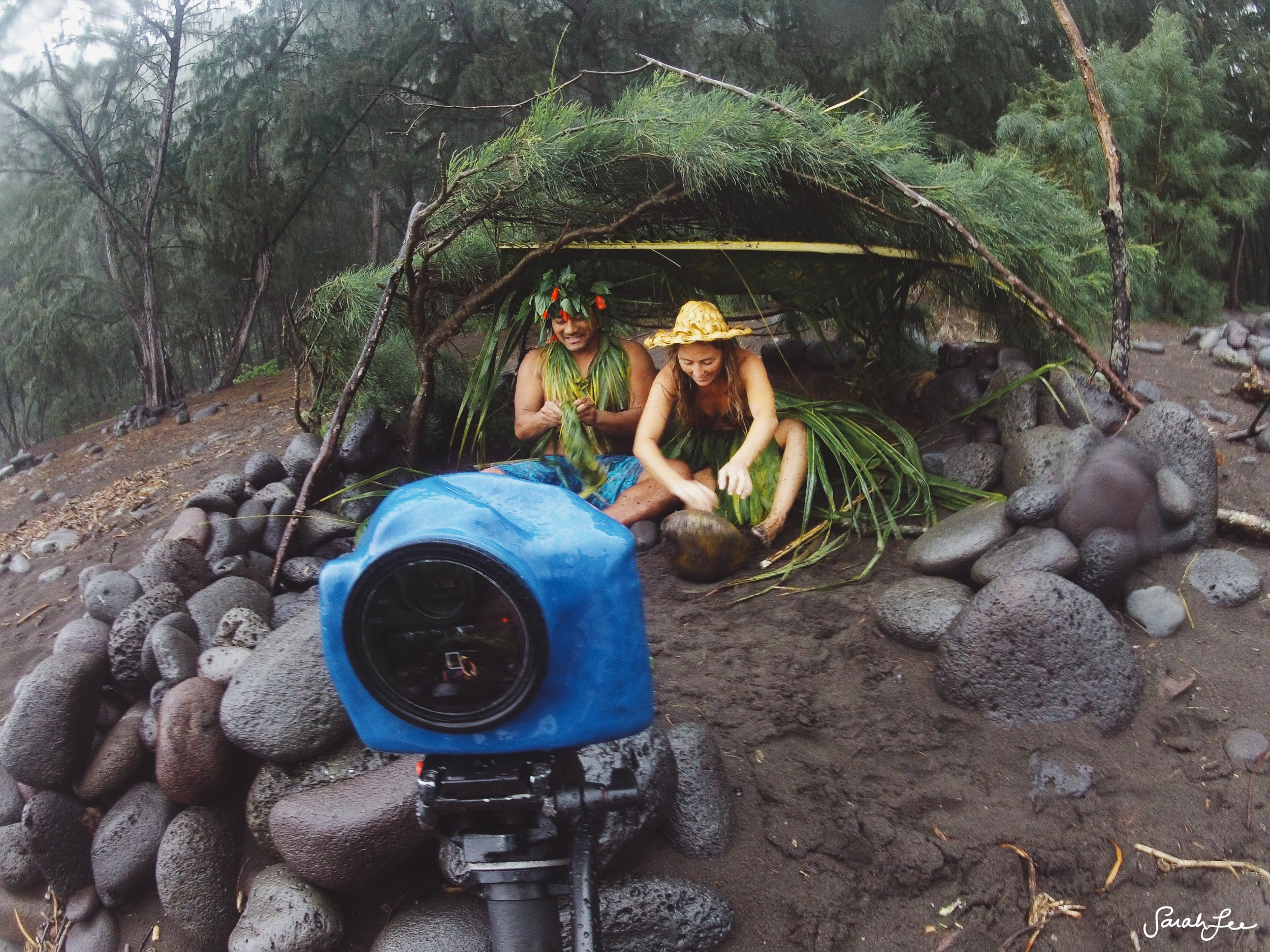
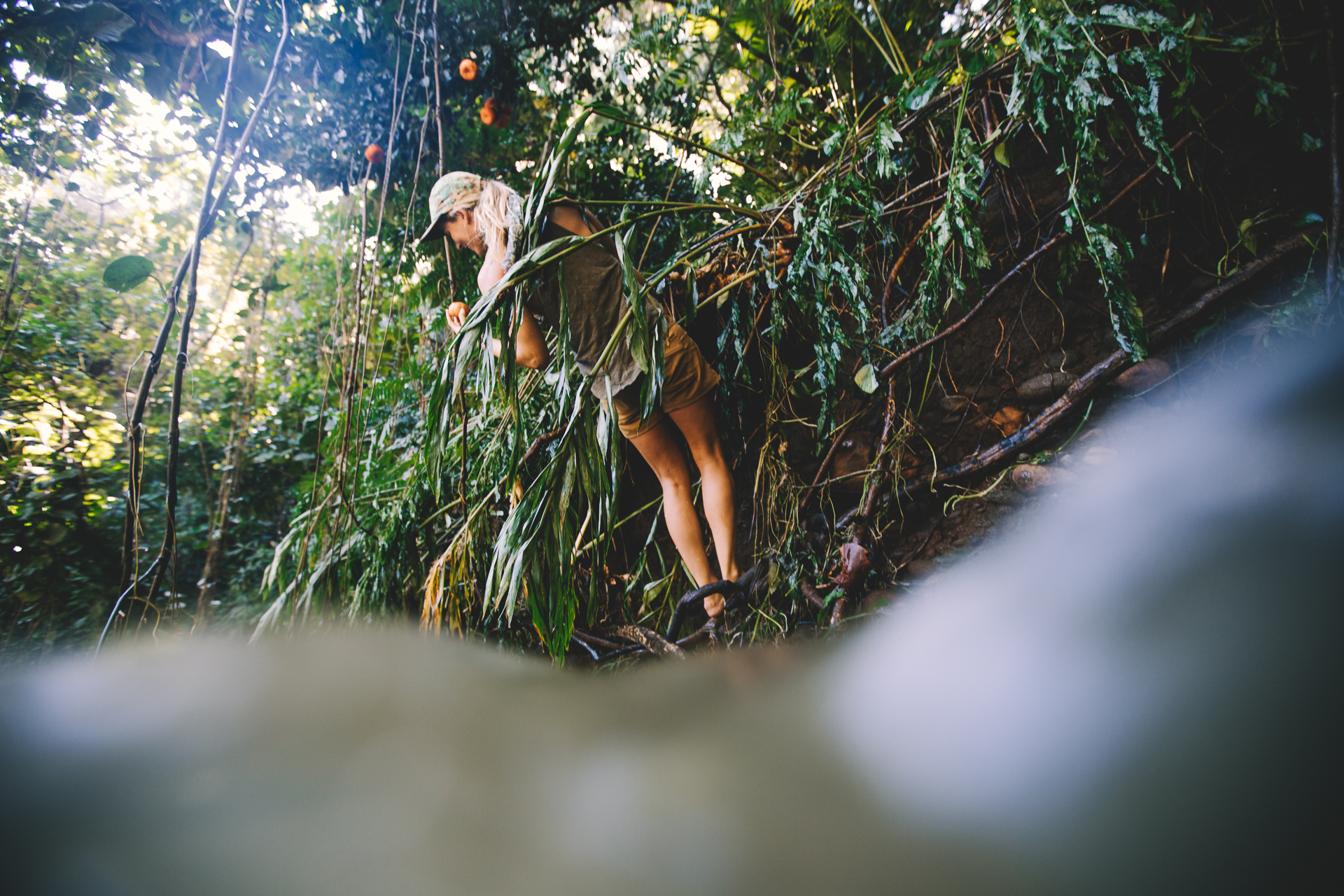
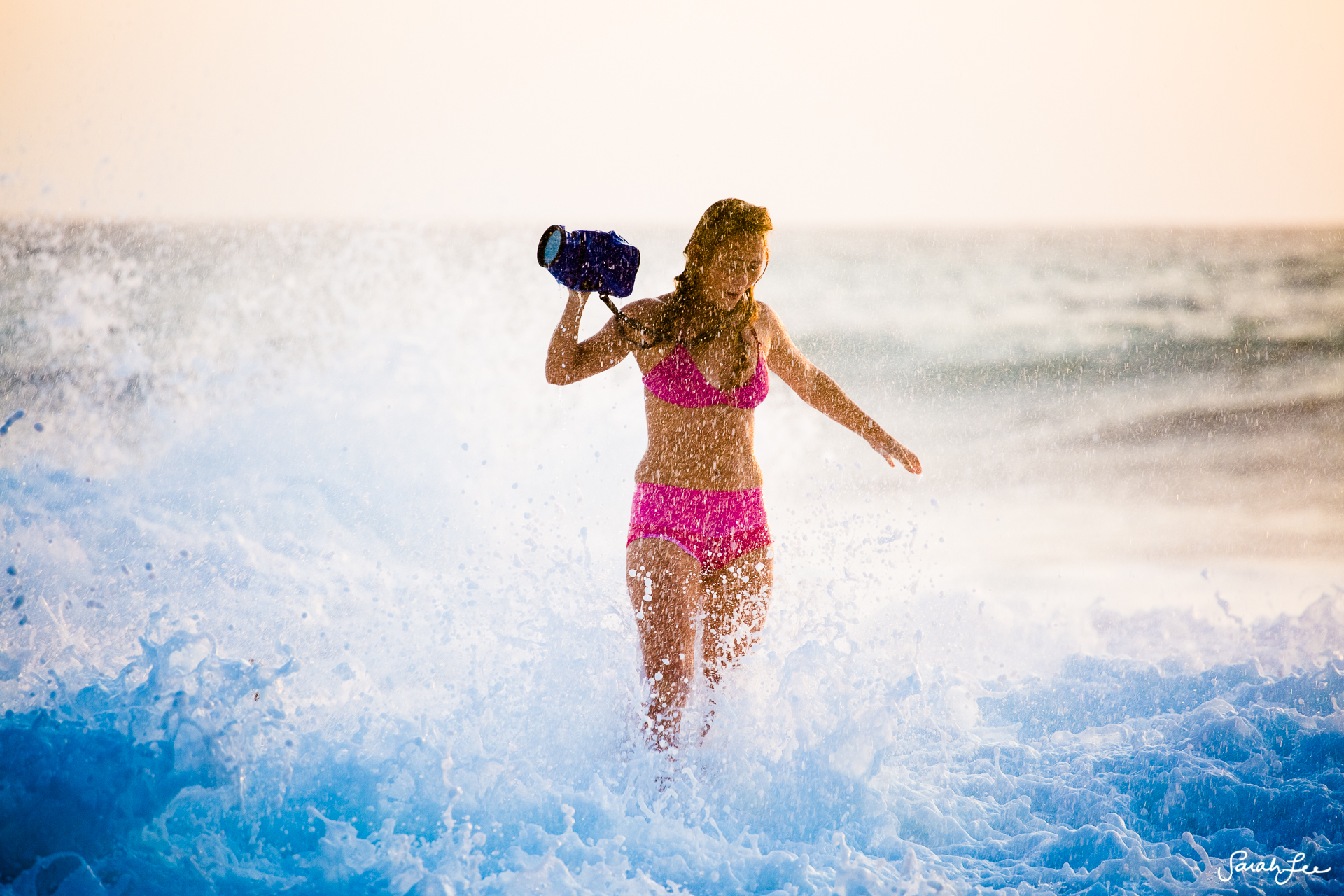
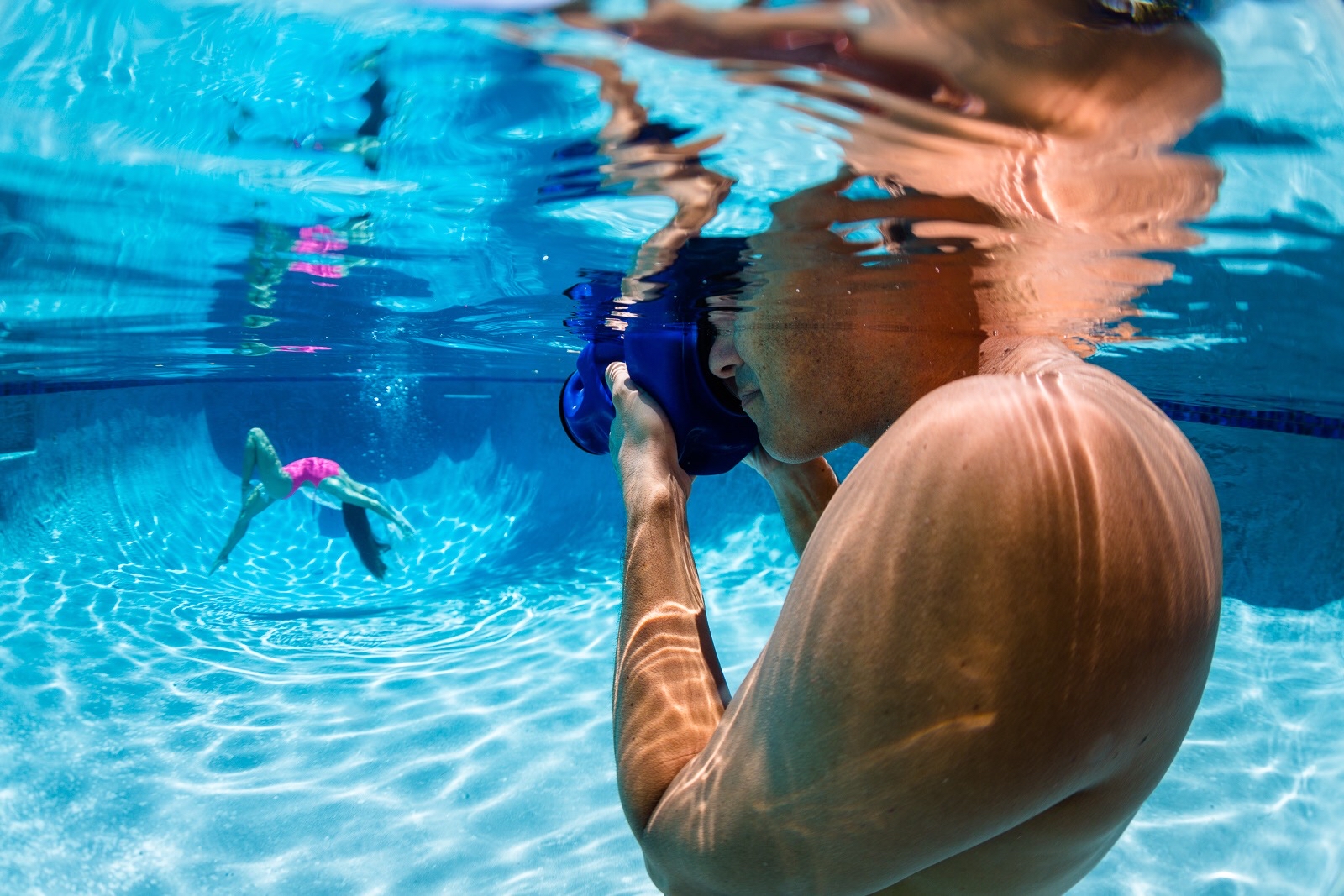
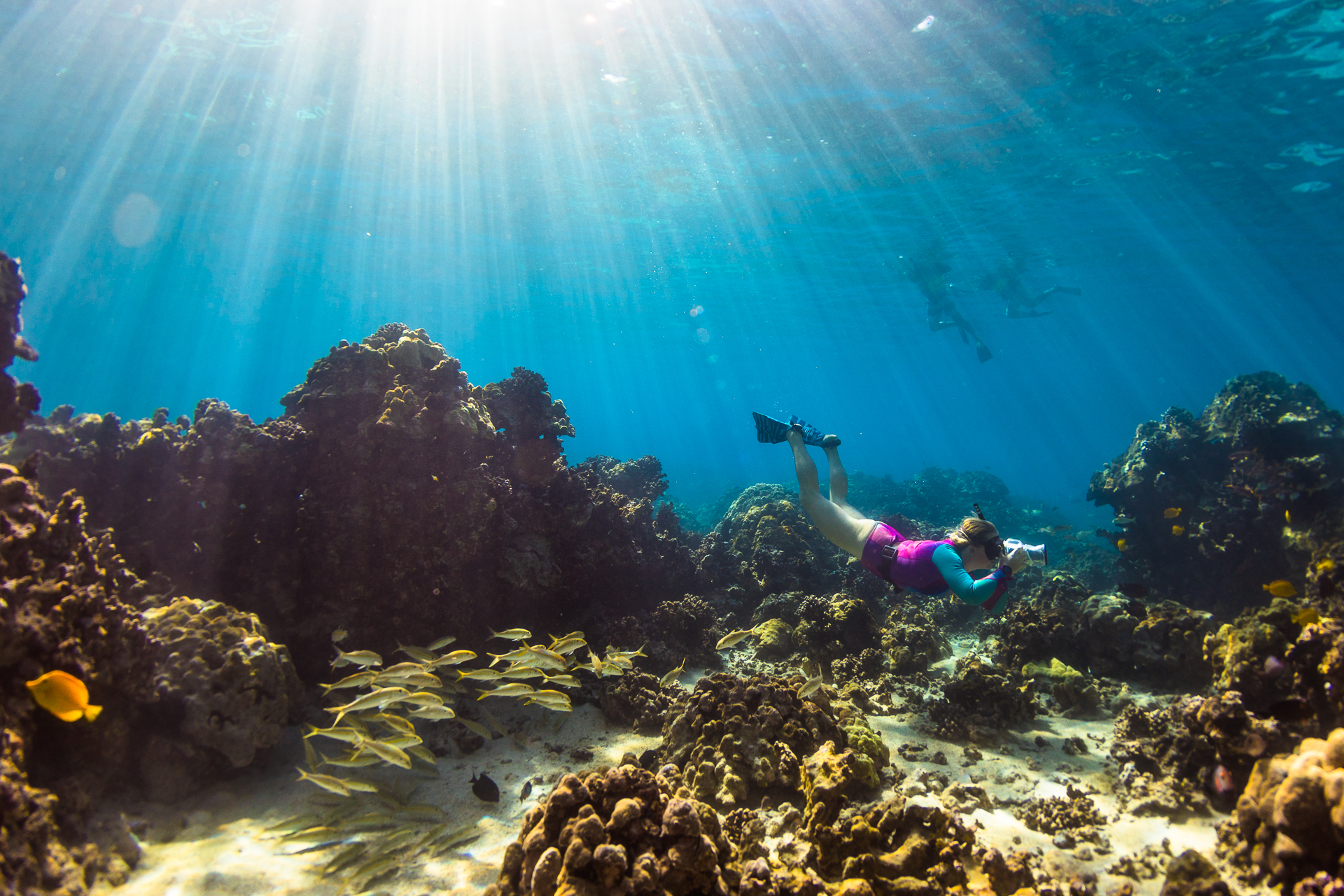
When I use the Outex underwater, I use my Canon 16-35mm f/2.8 wide angle lens, either in an 82mm flat port or the 120 dome port. When I am shooting surfing with the Outex above water, I like to use the Canon 70-200mm f/4 non-IS with extension rings on the 82mm flat port when I’m traveling light, or it’s own 67mm flat port. Occasionally I’ll use the 50mm f/1.4 in the water with the Outex, or the Canon 8-15mm fisheye lens with the 100 dome port.
I shoot within 10 feet of the surface in natural light, often just at the surface to keep as much reds in the photo as possible. I like to keep my shutter speed at least 1/1000s, low ISO and an open aperture.
If I am planning to use the Outex, I will load up at home and I leave it on my camera, wrapped in a towel in my backpack or beach bag ready to go. I leave the metal rings semi-loose and tighten them up before I get in the water.
I prefer to use the Outex without straps. I just carry it and do not use the Outex in situations where I might lose it. Use the straps if you’re not very confident in the water and need both hands to swim but do not let it drag behind you in the water because that may stretch the watertight seals.
Clear Outex Waterproof cover and Glass Dome Port with a Canon 5DMK4 + 8-16mm Fisheye lens inside.
Keep a desiccant pack in the Outex to keep it from fogging up in humid conditions. I put one of these inside no matter what. Fogging can happen if you’re shooting in cold water where the air is warmer but this can be mitigated by sticking a fresh desiccant pack inside of the housing before swimming out.
Just before you enter the water, make sure the rings are tightened down as much as possible with your hand. Do not use tools to do this because that might mess up the metal threading. I do not leave the rings completely tightened down on the Outex cover when it’s not in use, especially overnight before or after taking photos in the water.
Once it’s all loaded up and in the water, I hold it loosely in the water as I would a camera without the Outex cover. I try not to tug on the areas that are sealed off by the lens and LCD ports. I particularly try to avoid switching between the photo/video settings on my Canon DSLR too often so I don’t stress or tug at the rubberized material.
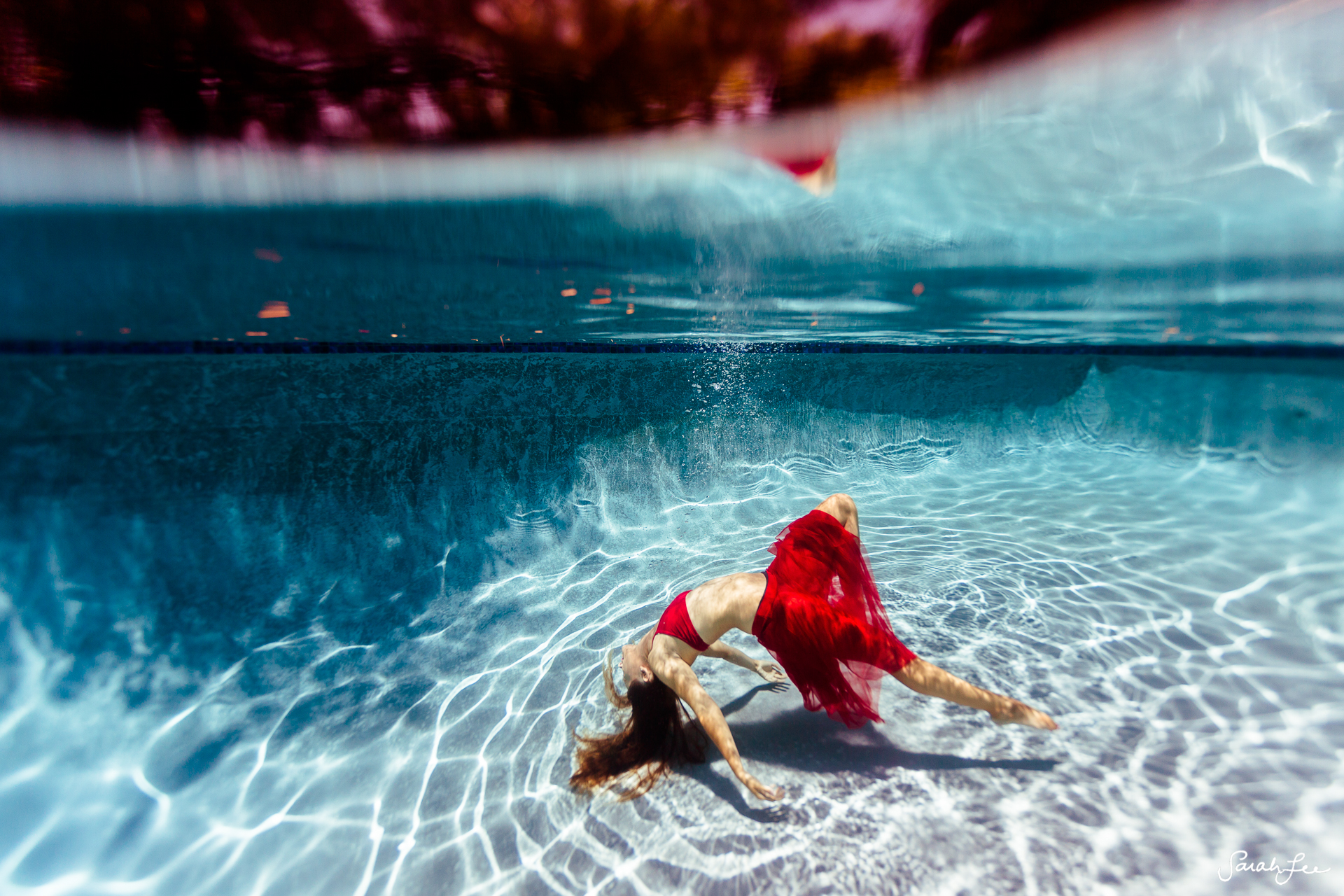
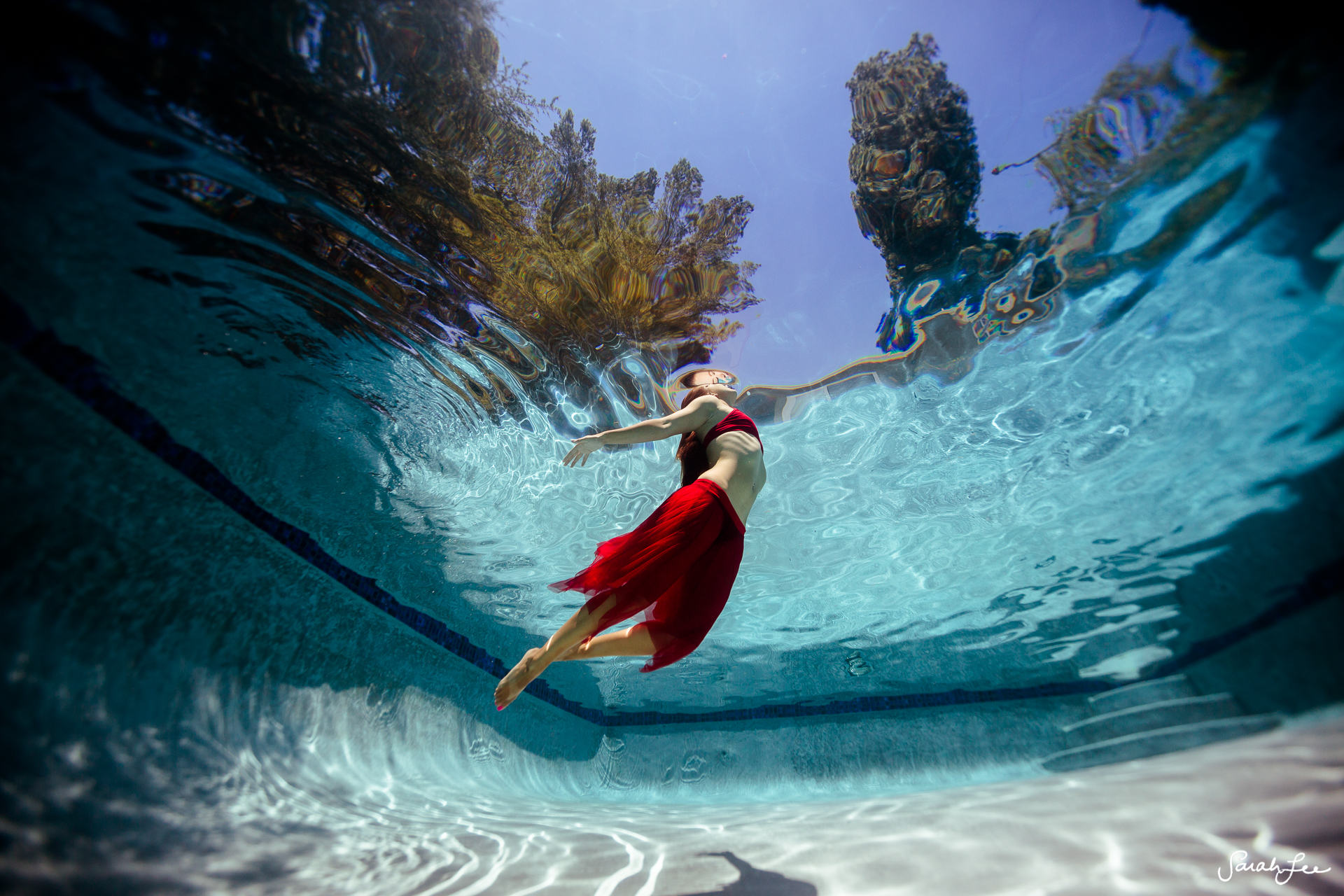

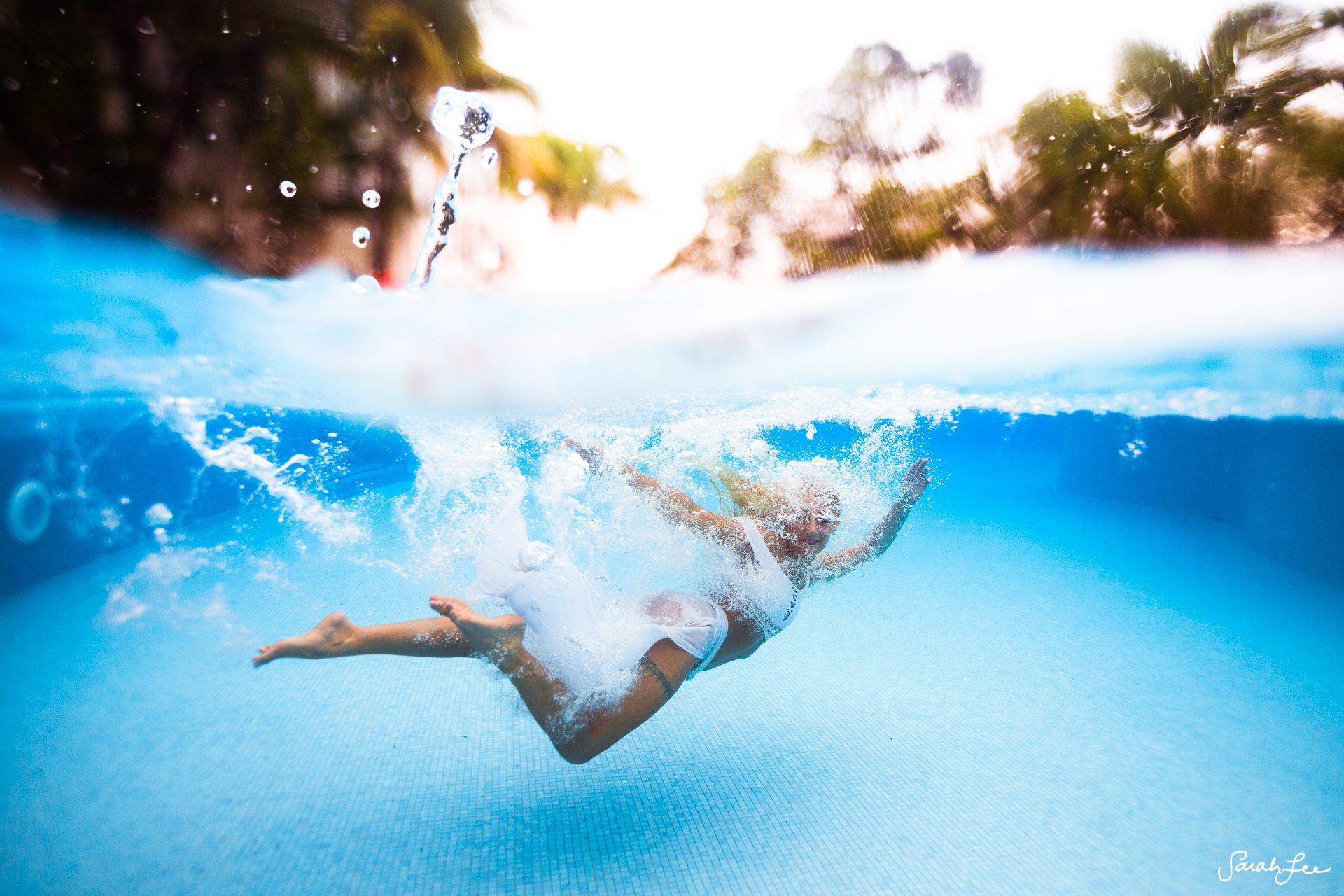
Outex Optical Lenses: Flat Glass Ports and Glass Dome Ports
These are high quality lenses, made with stainless steel and zeiss-grade glass. Glass ports are great because they don’t scratch as easily as the cheaper acrylic ports in other housings and even professional surf housings.
If you’d like to go the most affordable route, buy one of the Outex lenses that fits your largest filter thread size, and get adapter rings for smaller lenses. While on the road I have 4 Outex pieces with me: 82mm flat port, 120 dome port, Outex cover, and LCD back window. My Canon 16-35mm has the largest filter size at 82mm, and I carry adapter rings so the same glass port can fit on my 50mm f/1.4, 70-200 f/4, and 24-105 f/4.
Check out these 3rd party step-up adapter rings on Amazon.
Of all that Outex offers (regular ports, flat ports, and dome ports), I prefer the flat ports for shooting that’s mostly above water. They’re easier to keep wet or dry, depending on what you’re shooting and have less surface area than the dome ports. They are designed to avoid water beading and possible buildup from other elements in the water which may cause autofocus problems. Don’t go cheap and just buy the regular ports if you’re shooting in the water. You want to be able to let the water slide off the port as easily without some of the water getting stuck.
Outex Flat port (left) and Outex Dome port (right)
If you’re shooting underwater exclusively, get one of the dome ports that fits your fisheye or wide angle lens. These also work better for split-level shots. Using a dome port improves refraction and increases focal point distancing and virtual image attributes needed for split-level and underwater photos to work clearly.
Shooting underwater gets a little more pricey with the Outex Dome ports but they will give you the sharpest underwater photographs compared to a flat port. If you have a fisheye lens such as the Canon 8-15mm, you’ll have to buy the dome port for an additional $400 but I’d highly suggest getting in contact with the Outex support team to make 100% sure you’re ordering the right dome port for your fisheye or wide angle lens.
To shoot split over-under photos properly in the water, it’s good to shot it at least F/11-16 depending on how you compensate with shutter speed and ISO. Flat, glassy conditions in the water with little wind and bright overhead sun is ideal.
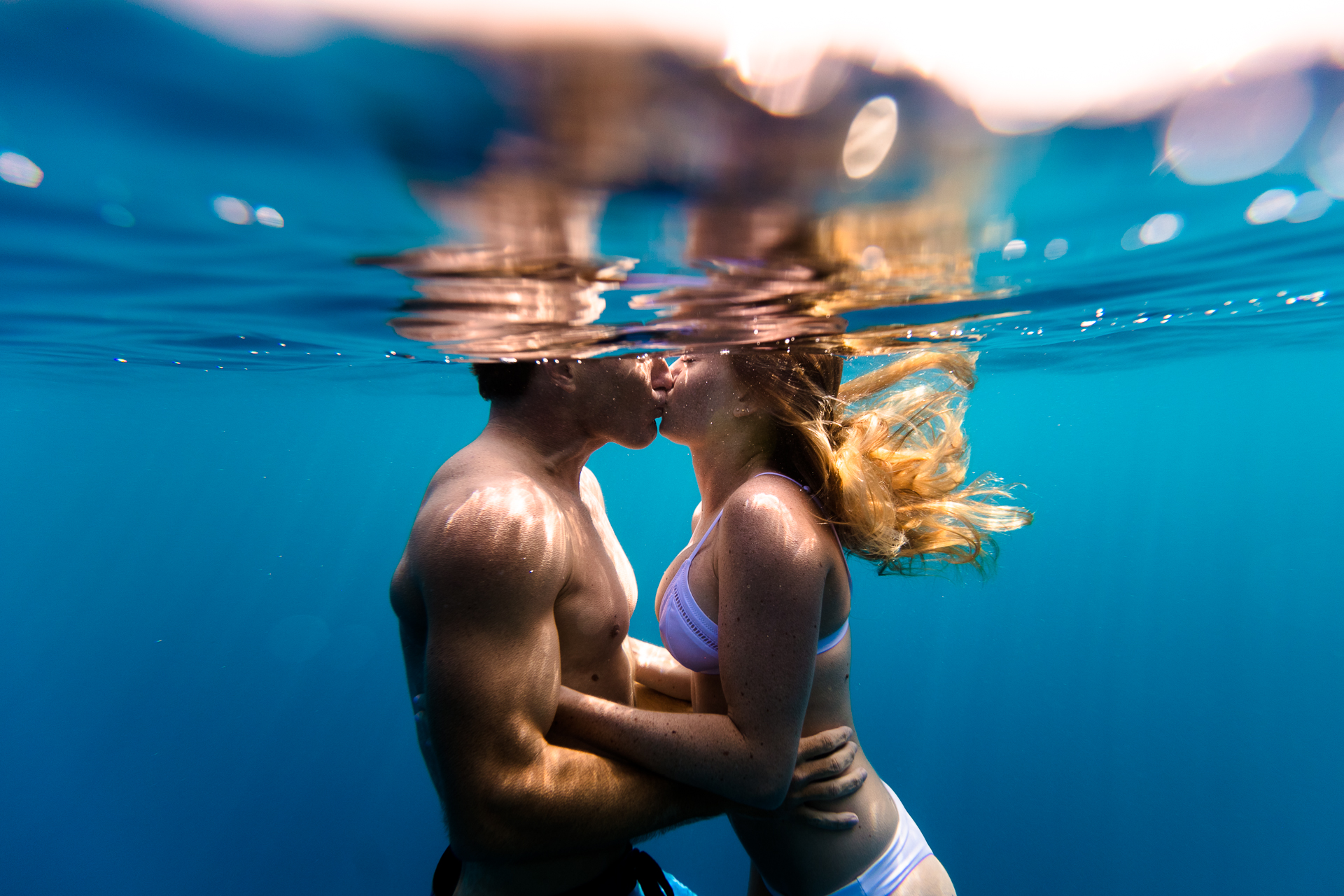
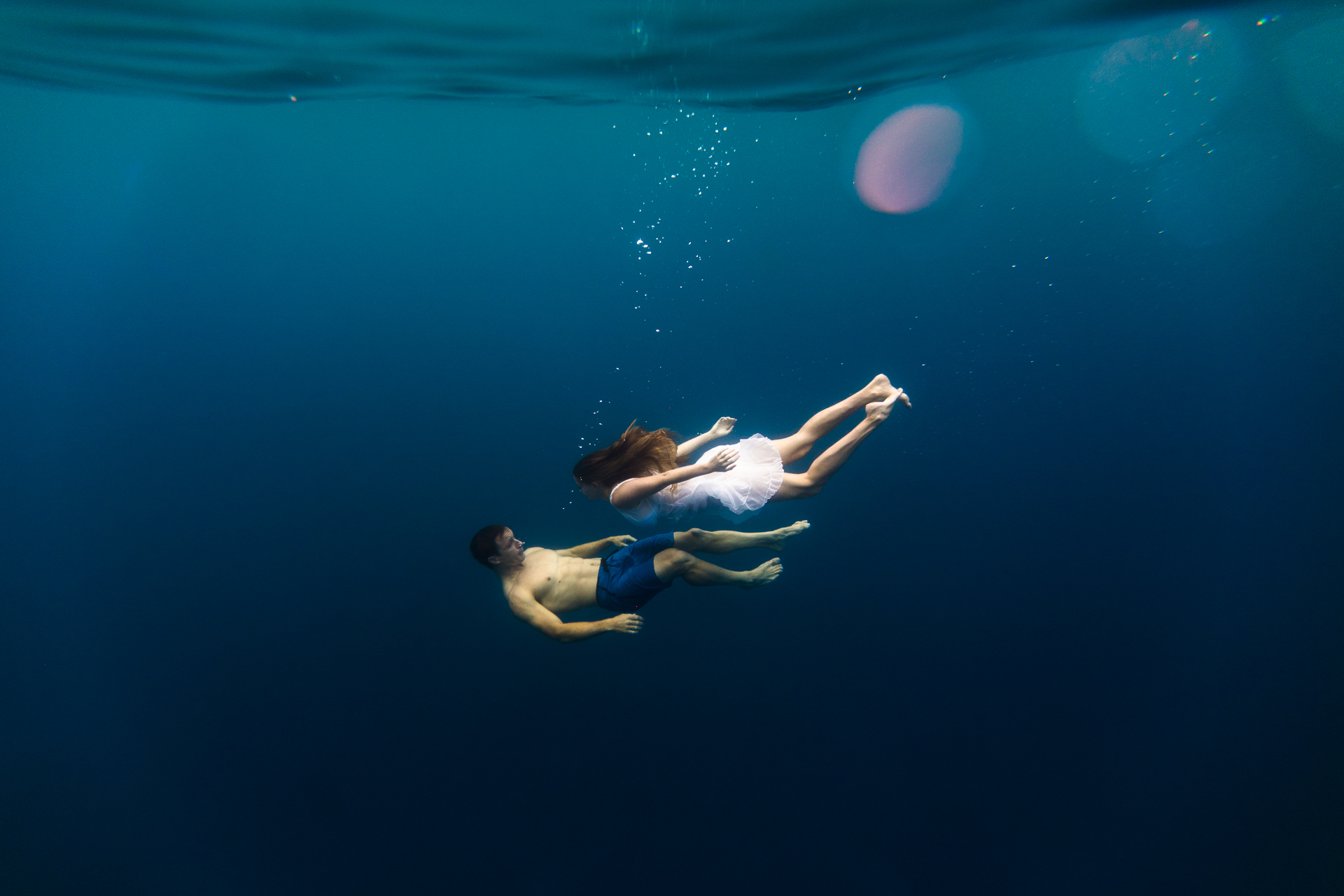
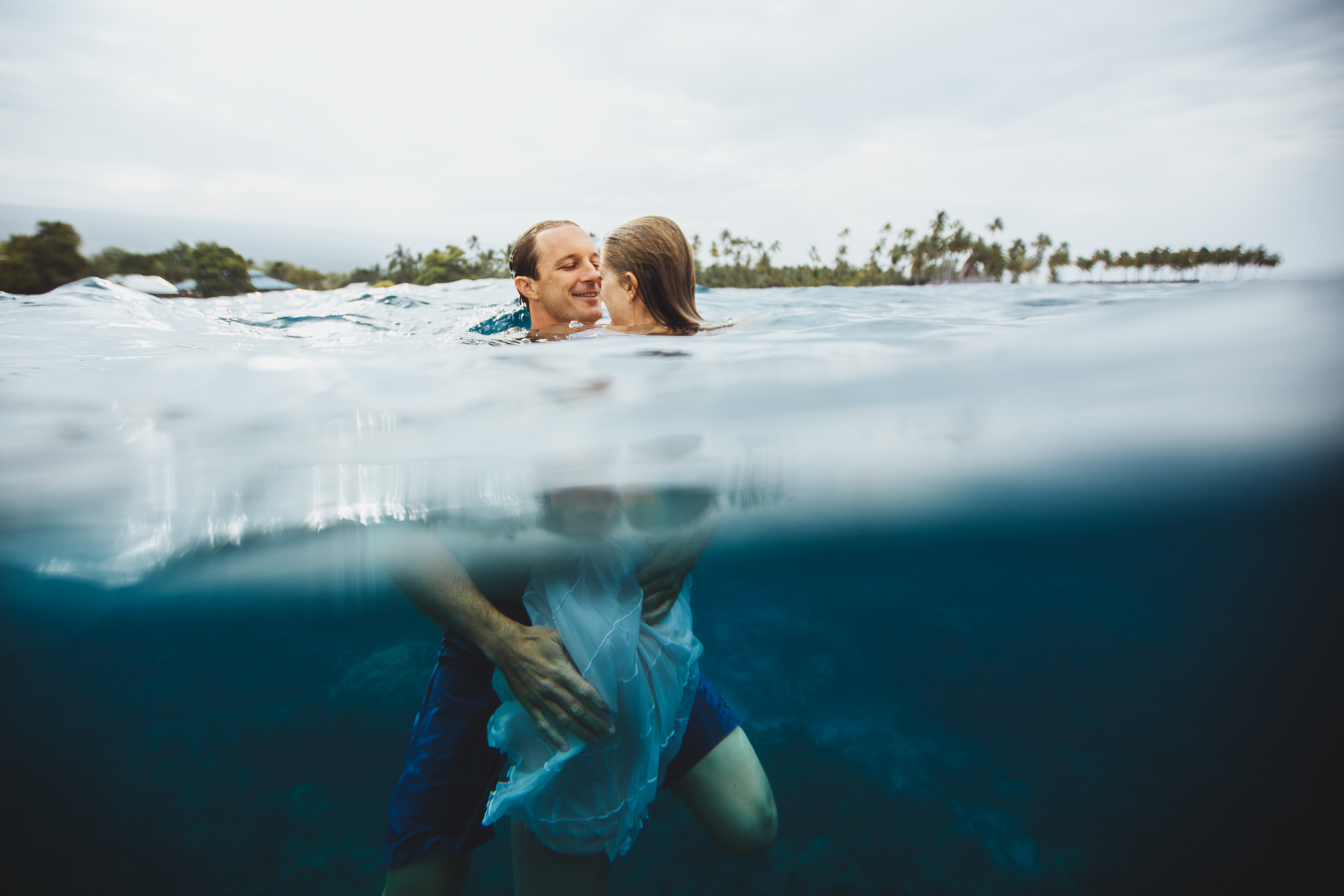
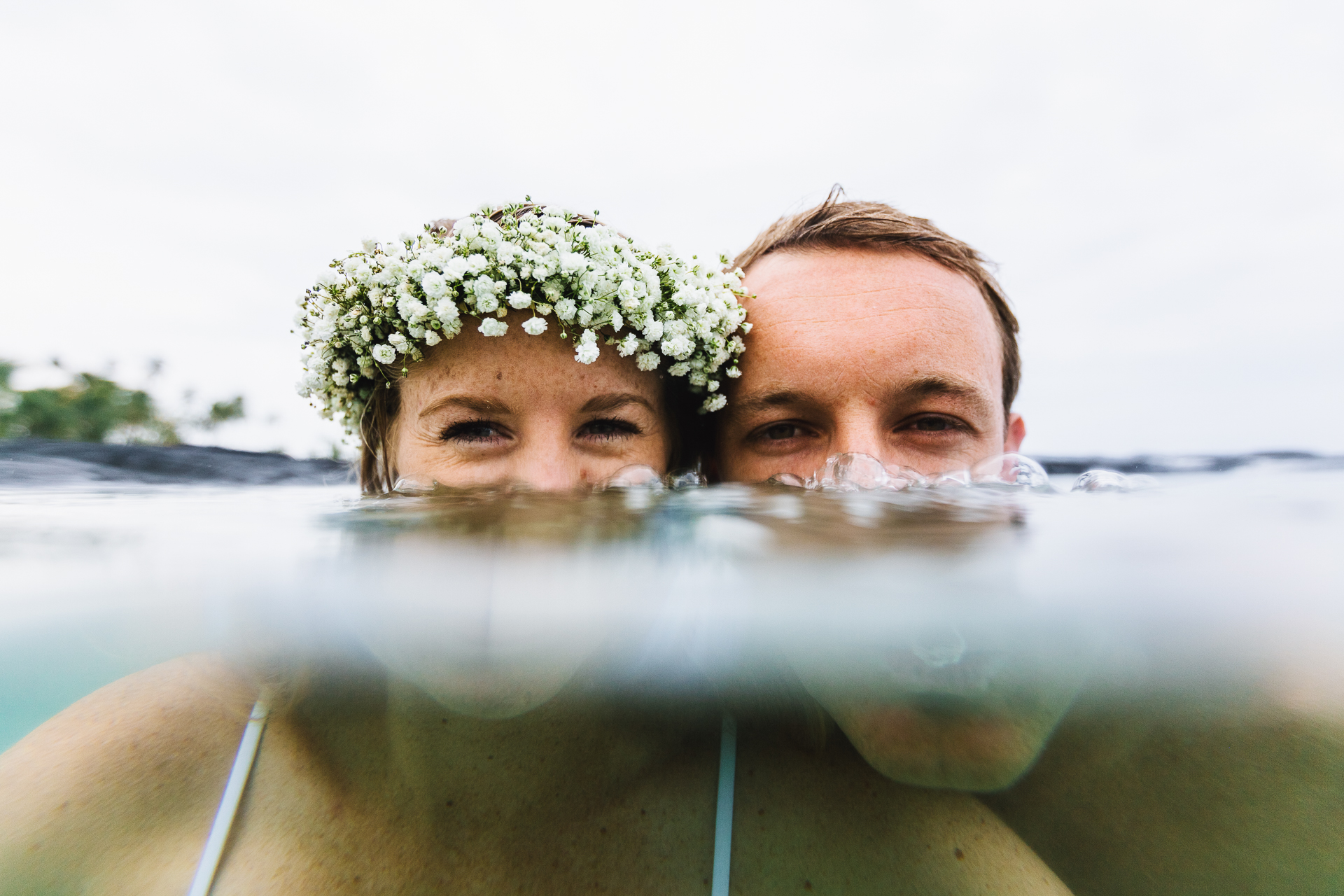
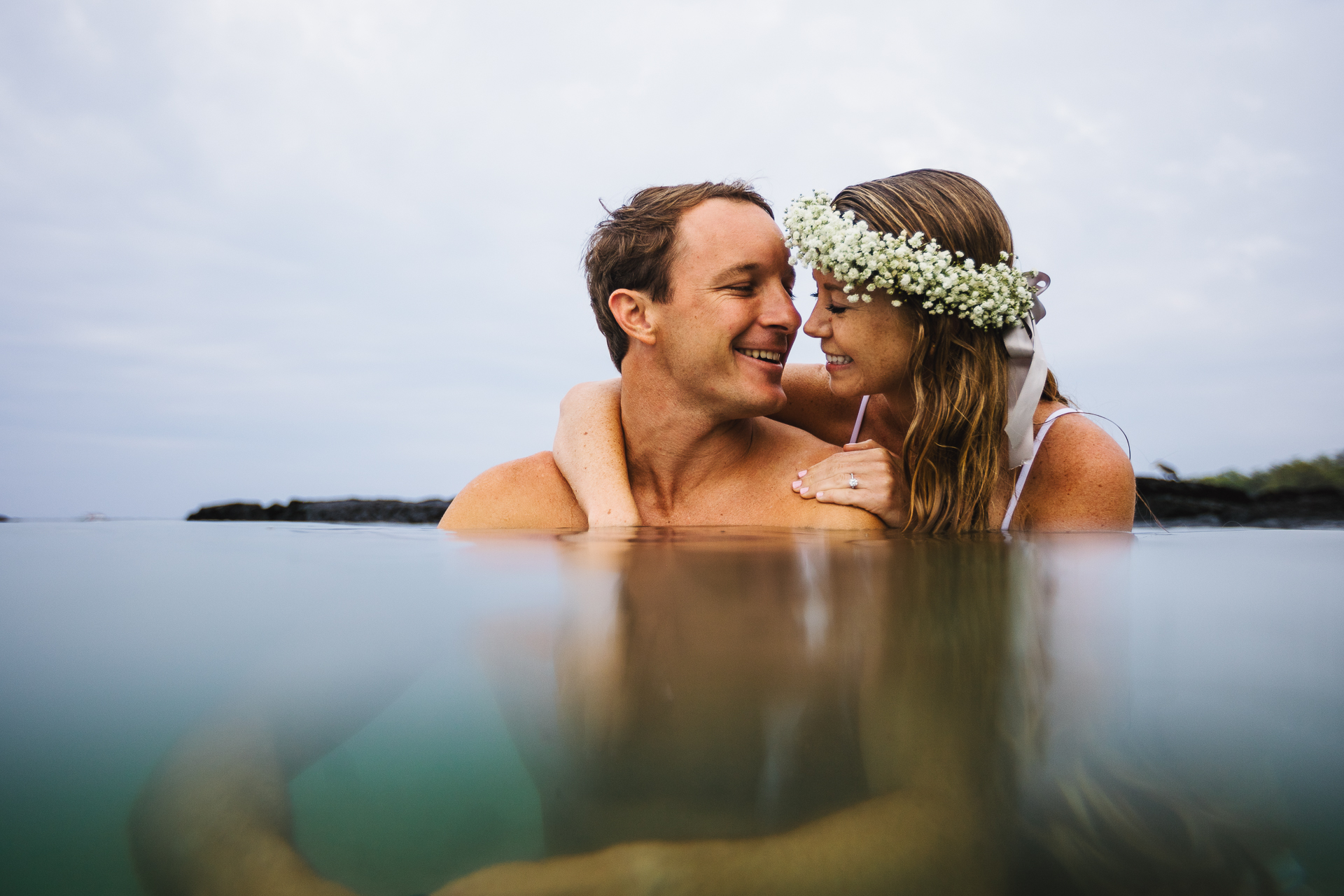
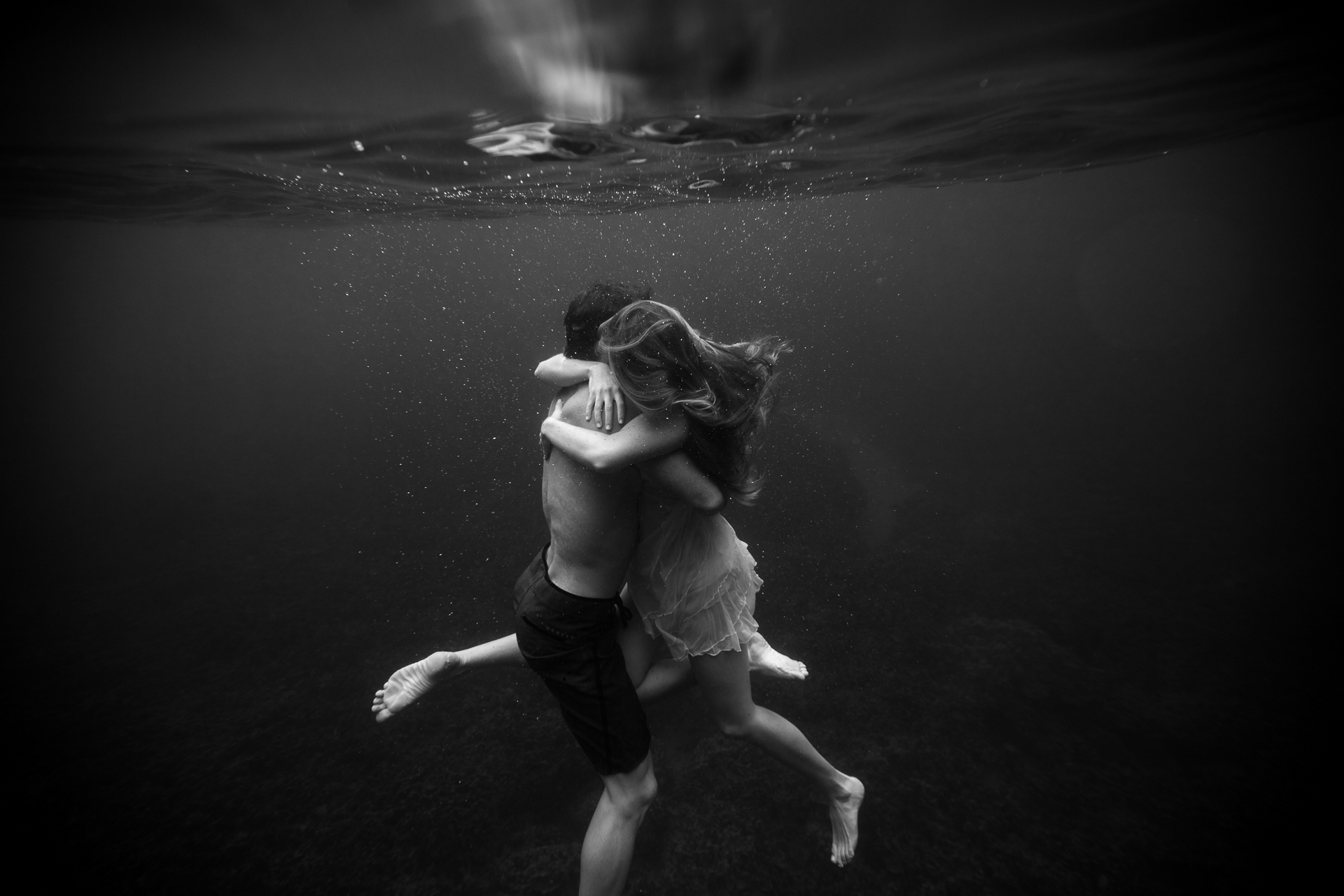
How to Set Up the Outex Camera Cover
Set-up takes a little time to get used to, watch the tutorial videos on Outex to learn how to install it properly: http://www.outex.com/installation/
I load the camera body with body cap on first through the LCD opening, then roll down the lens port, put the lens on, stick a desiccant pack in, screw the lens filters on, then put on the LCD lens last, squeezing out as much air as possible before really tightening it down.
Make sure to squeeze as much air out of the Outex as possible before sealing off the last piece. The last thing you want is the camera to heat up and the air to expand in the Outex. Don’t shy away from tightening the rings down as tightly as you can.
General things to watch out for when using the Outex:
“Always re-tighten your seals over time. If you plan to use Outex underwater over extended periods of time( 20+ minutes) we advise extra caution. The threaded seal can move ever so slightly over extended uses of the product, specially when being used actively by changing focus, pivoting the LCD, etc. The more you move things (LCD, lenses, adjustments, etc) the greater the chances of very small loosening of the threads over long periods of time. If you re-tighten as you use, you decrease changes of breaches.” http://www.outex.com/learn-more/
You always run the risk of leakage with ANY underwater camera set-up. So for anyone just getting into shooting underwater, make sure you DO NOT do these things:
Get in the water slowly or have a friend HAND it down to you. DO NOT jump in the water w. the Outex.
Don’t swim hard with it and let it drag in the water. This can stretch the cover away from the waterproofing points.
Check the metal rings often and make sure they are completely tight!
Do not leave it in the sun! If the Outex cover sitting out, cover it up with a towel and keep it in a shady area.
Be very careful that there’s no hair or sand between the Outex cover lip and the metal rings when you seal them closed.
DO NOT use it for situations deeper than 20ft, while scuba diving or in the shore break or big waves.
I do not recommend changing lenses/cards/batteries during the session w. the same Outex cover. Commit to one lens w. a full battery and high capacity card in this set-up. (I try to do this with my hard case water housings as well, just to reduce the risk of water drops and moisture in humid environments.)
If you’re using the camera controls a lot, make sure you don’t tug on the edges of the Outex too hard. I have found that sometimes you need to remove the swivel viewfinder completely in order to access the controls beneath it. I would suggest removing it to change those settings instead of swiveling it to the left or right because that can tug on the edges of the Outex and viewfinder too much.
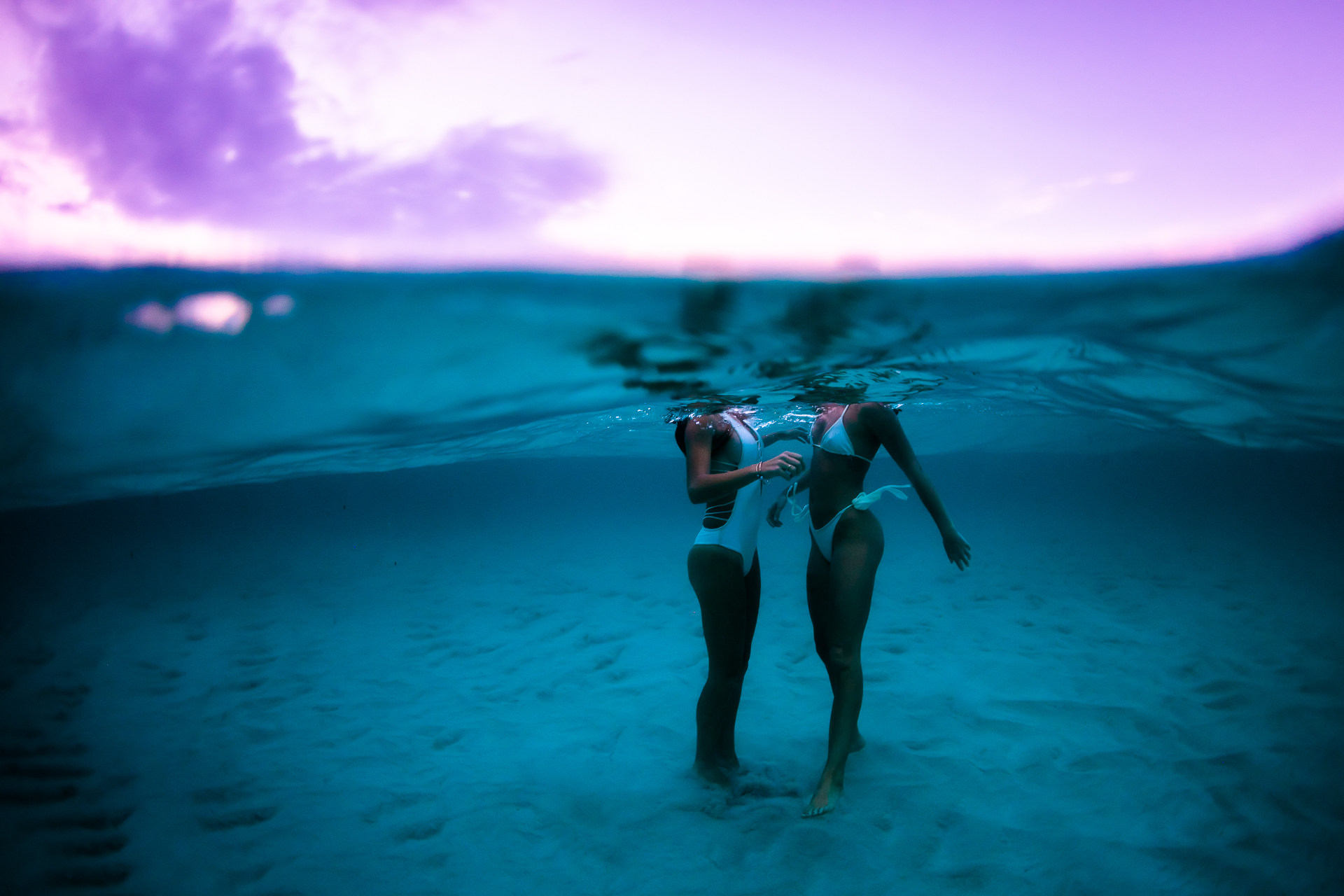
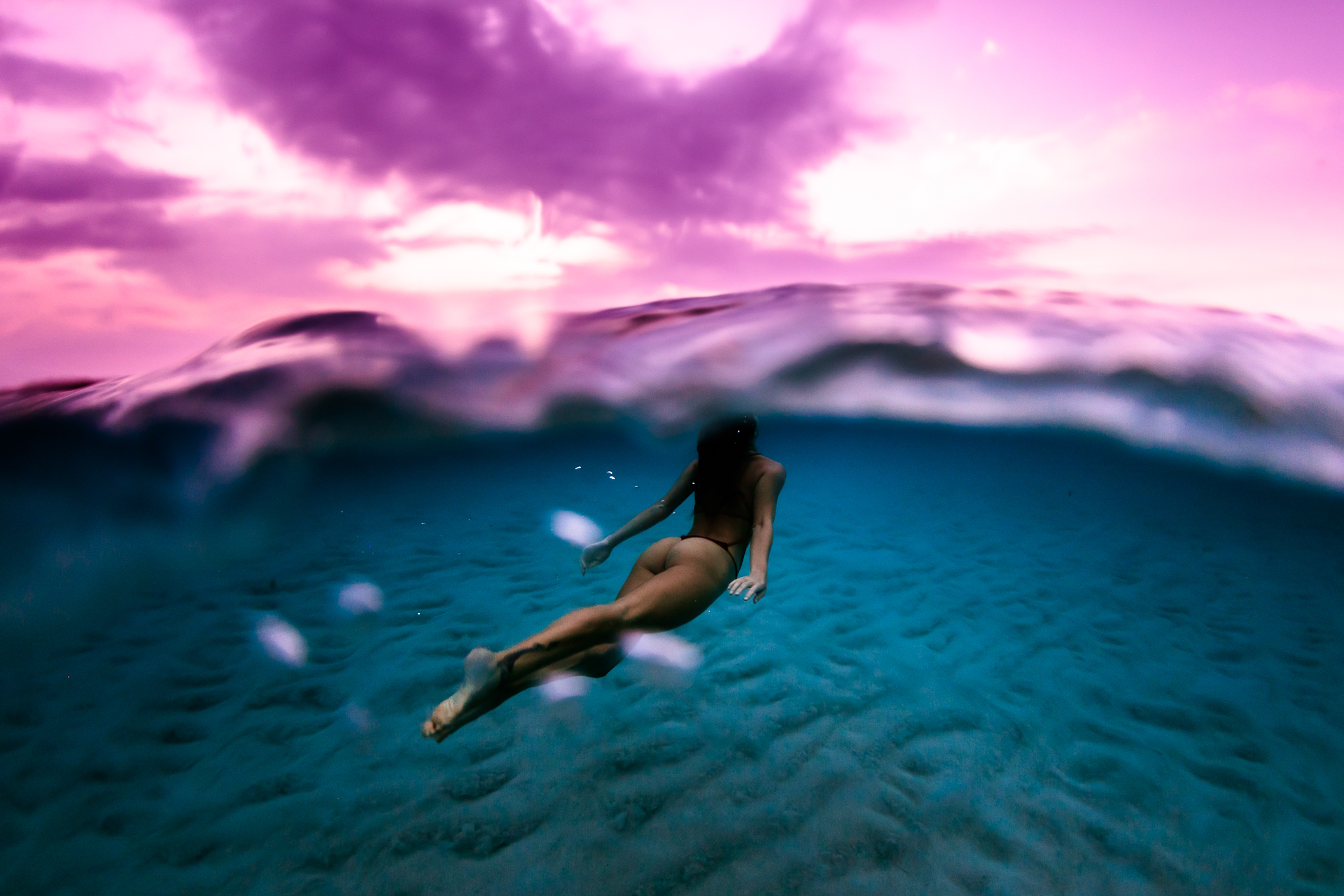
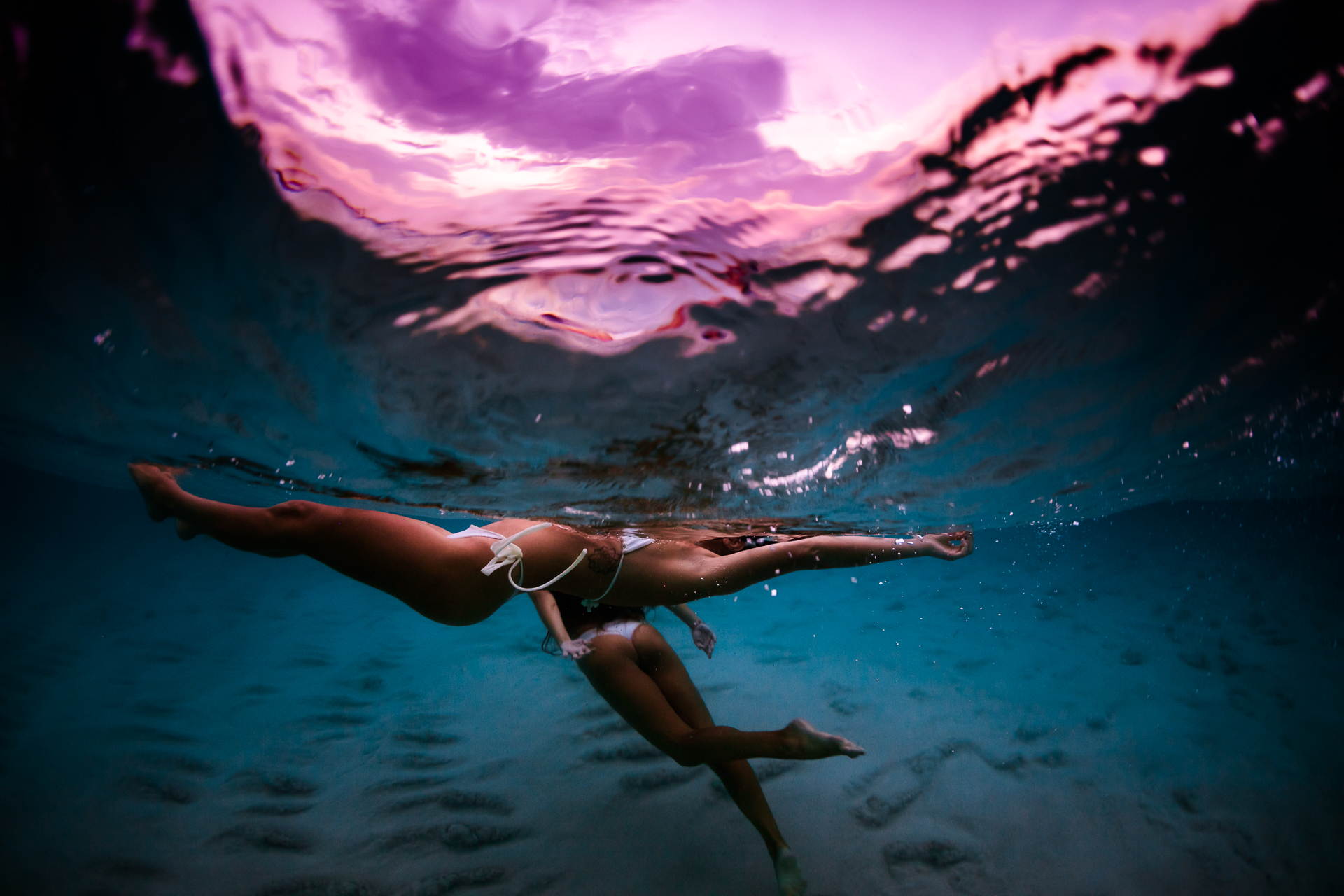
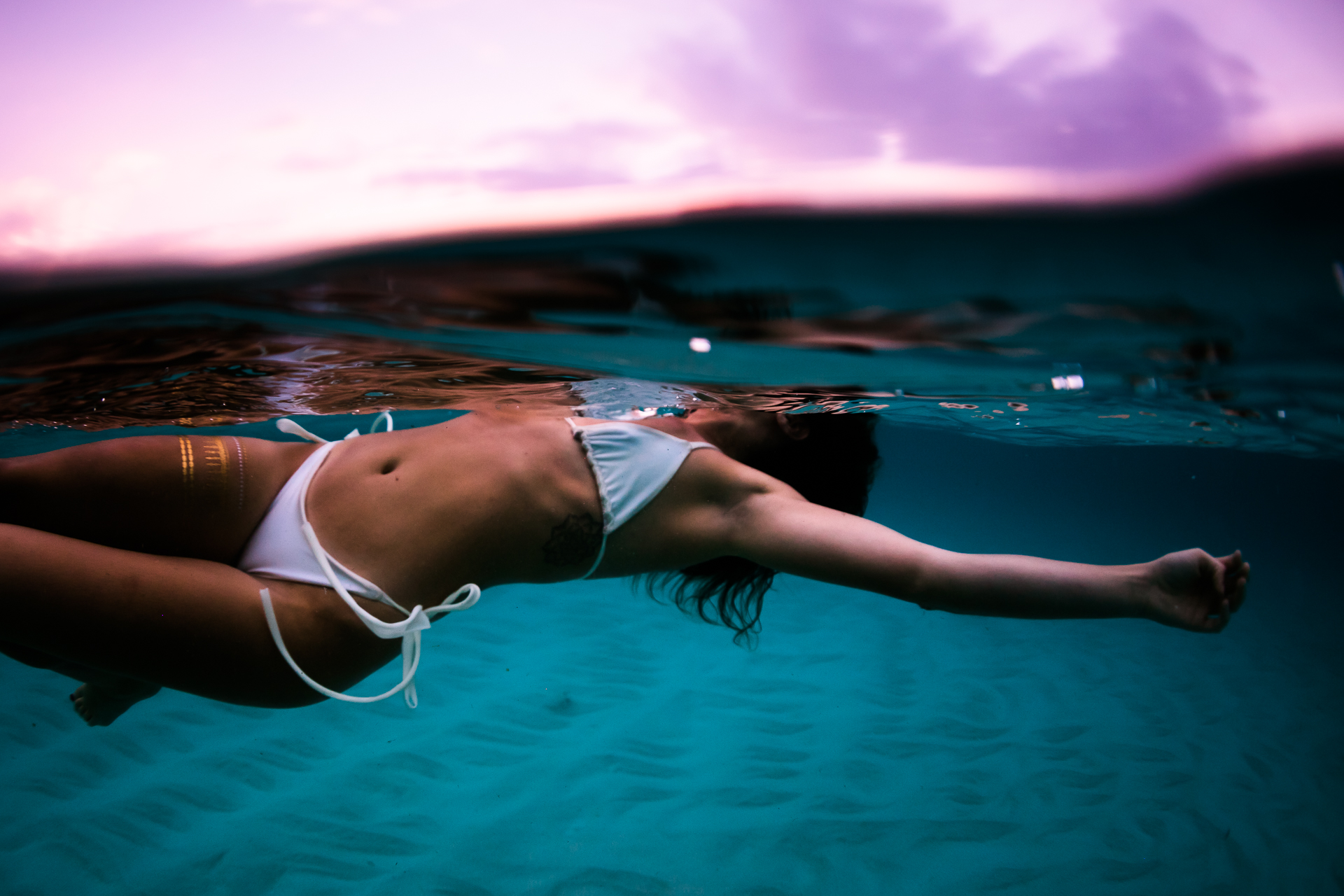
Outex vs. Surf Housings
When I was starting out with underwater photography as a teenager in 2006, I struggled to find an affordable way to take my DSLR underwater. At the time I had a Canon Rebel XT and the 18-55mm kit lens and started with an Ewa-Marine bag housing. In 2009, I invested in a custom-built Kobetich surf housing which catapulted my water photography work forward, and am now using the Outex housing and Aquatech Elite housings, depending on the situation.
The Outex is much more tactile, and allows easy access to all of your camera controls and zoom functions. The Outex cover and additional pieces wrap right up into something that fits in the palm of your hand and is feather light.
If you’re hiking or on a boat, it can be a pain in the butt to carry around another 10lbs+ of bulky waterproof gear, so if you’re not shooting a big job or in a crazy situation, the Outex cover might just do the trick.
Hard case surf housings such as Aquatech serve a purpose of their own, especially in big surf, long shoots in the water, and being impact-proof. If you’re going to be in tough situations, a hard case is better for you. I’ll have a blog post coming soon about the Aquatech gear I like to use for shooting in heavier surf, longer sessions, and for diving deeper.
Outex vs. Plastic bag housings such as the Di-Pac or Ewa-Marine:
All of the plastic housings that I come across are made with cheaper acrylic front ports that scratch very easily and are not adaptable to various lenses and fisheye lenses like the Outex is. I find that Outex’s LCD and lens pieces create a much better seal than any of the other soft housings, and you have much more control of making sure it’s completely water-tight whereas with the other soft housings, their water tight-ness is sketchier.
Exploring an untouched cenote with Alison Teal and cave explorer Sam Meacham. Photo taken with a Canon 5D MKIII + 8-15 fisheye lens in an Outex Water Housing and dome port.
Outex Storage and Care
With any equipment that gets dirty, wet, and salty, its ALWAYS good to soak or at least rinse the entire unit with freshwater to prevent corrosion and salt crystals BEFORE you unload your camera.
Salt water is highly damaging so wipe off the lens rings each step of the way, also to stop any leftover water drops from getting on your camera as you take it out of the cover.
Once everything is dried, I like to store each glass piece in a little cloth or neoprene baggy of its own. It all fits nicely into one larger bag that you can stuff just about anywhere.
The blue Outex covers are not 100% consistent in thickness and wear out within 12-24 months of use according to the website. The new clear covers are made with a whole different and more durable type of material that is designed to last longer. Just keep it in a clean, breathable environment like a cloth bag (not a sealed plastic bag) and out of the sun when it’s not in use!
You can use lens cleaner to clean the glass with a lens cloth. No need to lubricate the housing like you do rubber O-rings on other underwater housings but you can if you’d like to.
“To clean Outex products we recommend water and mild soap as needed. Do NOT use petroleum based products on the Outex housings. Use only water based products – rubbing alcohol is OK […]The optical and viewfinder rings come pre-lubricated for optimal use. Over time, if used regularly in harsh environments such as mud, dirt, sand, etc, you may regain lubrication by reapplying silicone grease, as commonly used for underwater equipment, such as scuba gear.”
Split-level shot of adventurer Alison Teal in a cenote in Mexico. Taken with the Outex dome port and Canon 16-35mm wide angle lens.
How to Order an Outex
If you start with the basics, you can get a kit for under $400.
The Outex website has a great detail of resources available to you to investigate your needs on your own. I would go with the “Entry kit” if you want to be conservative. The entry kit does not have hole for the LCD back screen, only the front lens port. If you don’t mind not previewing the exact detail from the photos you’re taking, go with the Outex Entry Kit, otherwise go with the Pro kit if you’d like the back piece of glass so you can see the fine details of your photos on the LCD screen as you shoot.
If I was ordering from scratch, I’d go through the steps one the Kit Builder, plug in my camera brand and body (Canon 5D MKIV) + the filter thread size of the lens I’ll be using (Canon 16-35mm f/2.8 has a 72mm filter size) to get the Flat Port Lens. Total comes out to $254.99 without tax and shipping and includes straps.
Then, I would purchase step-up rings from Amazon that will appropriately fit the 72m flat port to my other lenses.
If I was ordering a Pro Kit for my set-up, it would be $428.99 without tax and shipping which includes one Outex cover, a glass front port, back LCD glass port, wrist strap, and neck strap. I would still purchase step-up rings via Amazon for smaller diameter lenses for above-water photography in the water.
If you’re planning on shooting underwater exclusively and have a fisheye or wide angle lens, get a dome port. It will run you an additional $400 but get in touch with the Outex team to really dial in which dome port is best for you. Ultimately I would suggest starting out with a flat port and see how it works for you first. They’re easier to travel with too. ;)
If you found this review helpful and are going to buy an Outex kit, please use this link and I'll give you a virtual high-five.
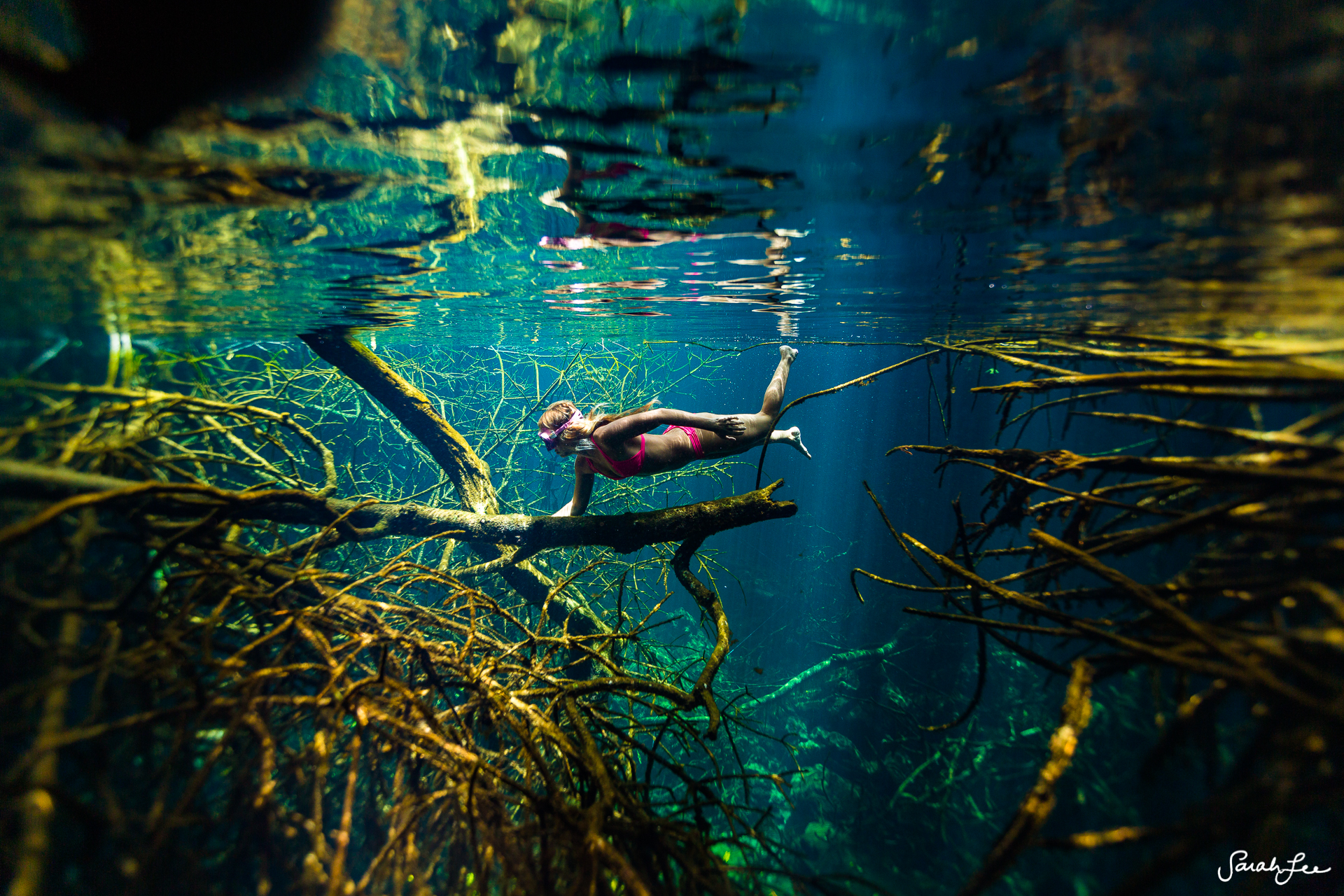

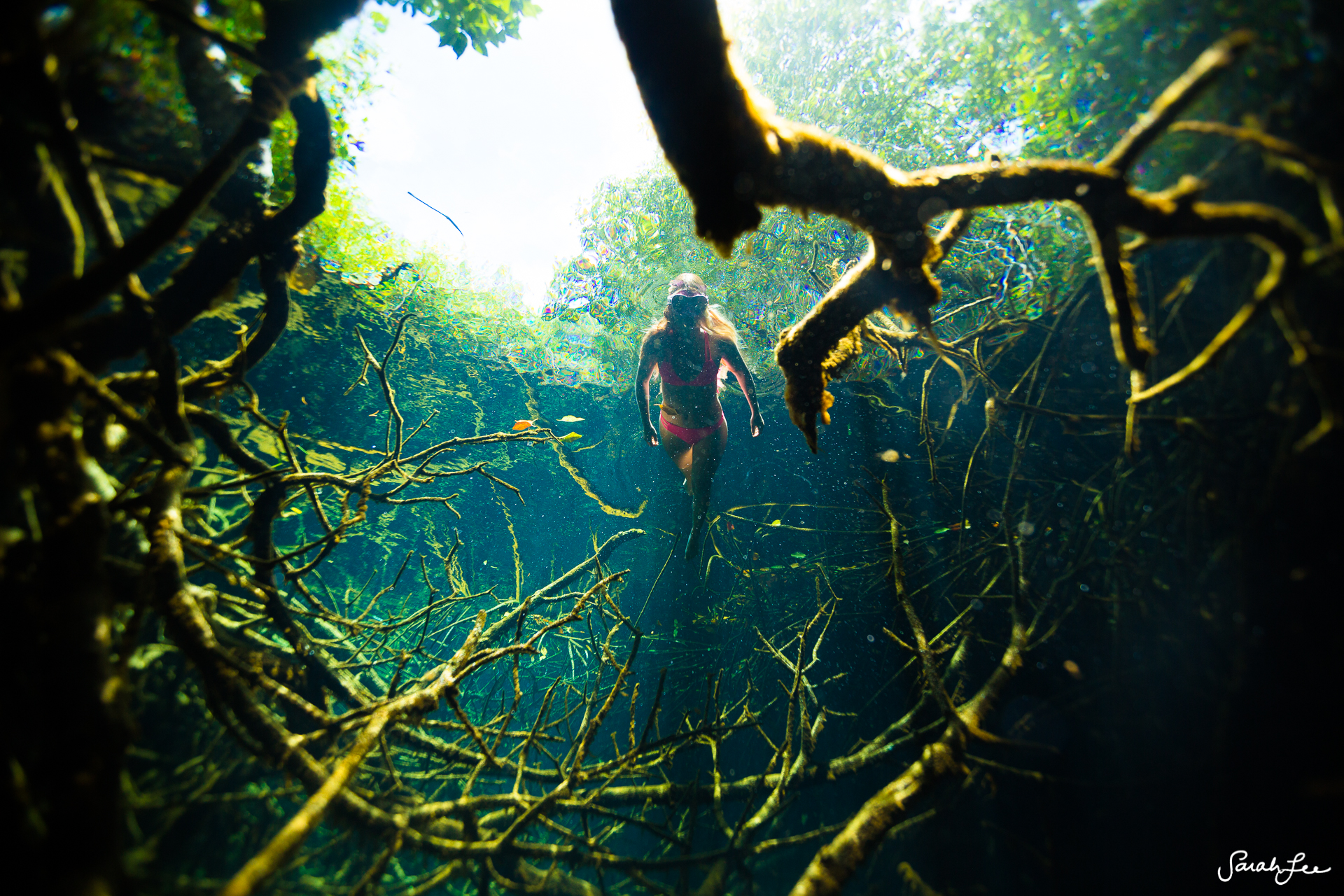
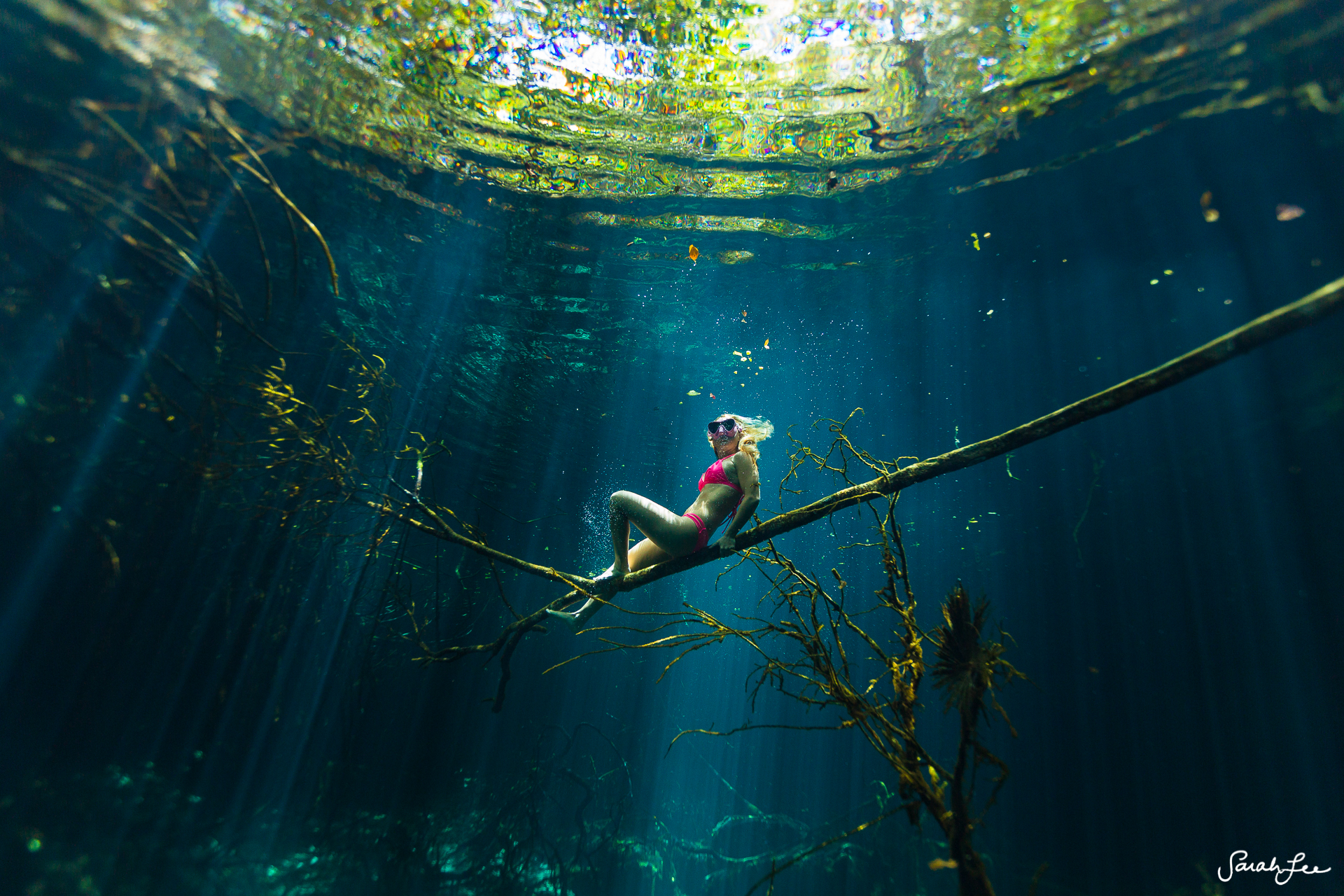
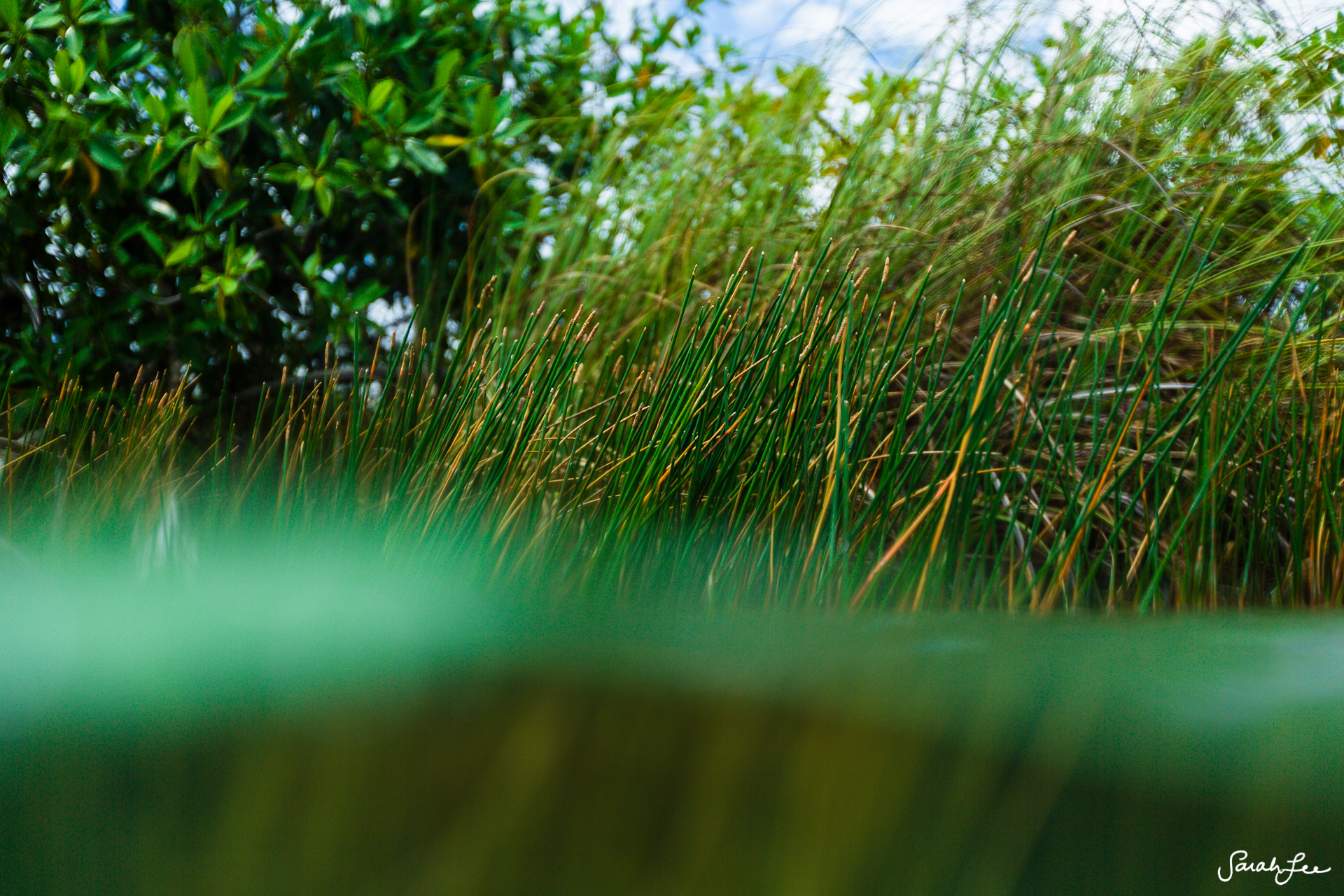
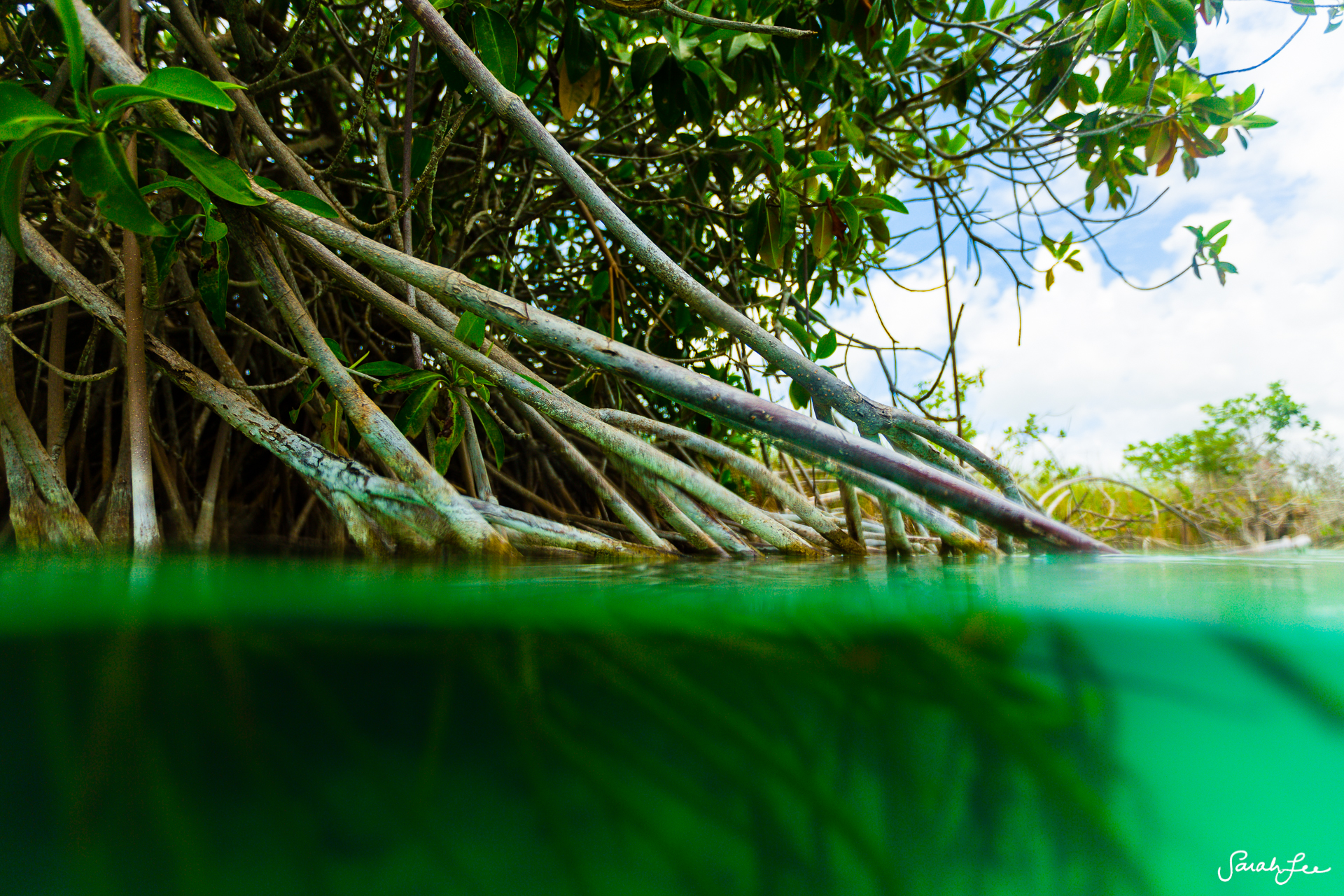
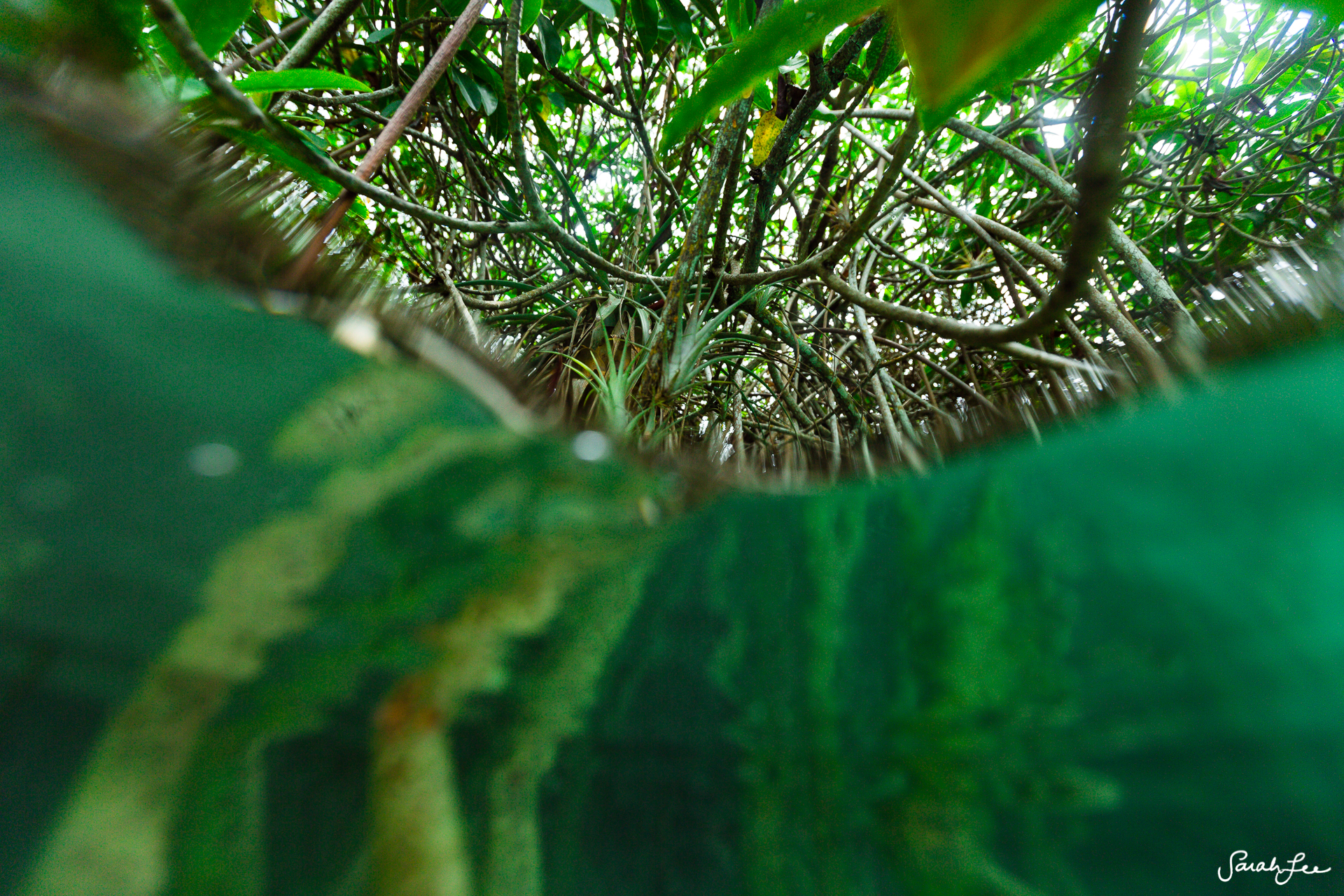
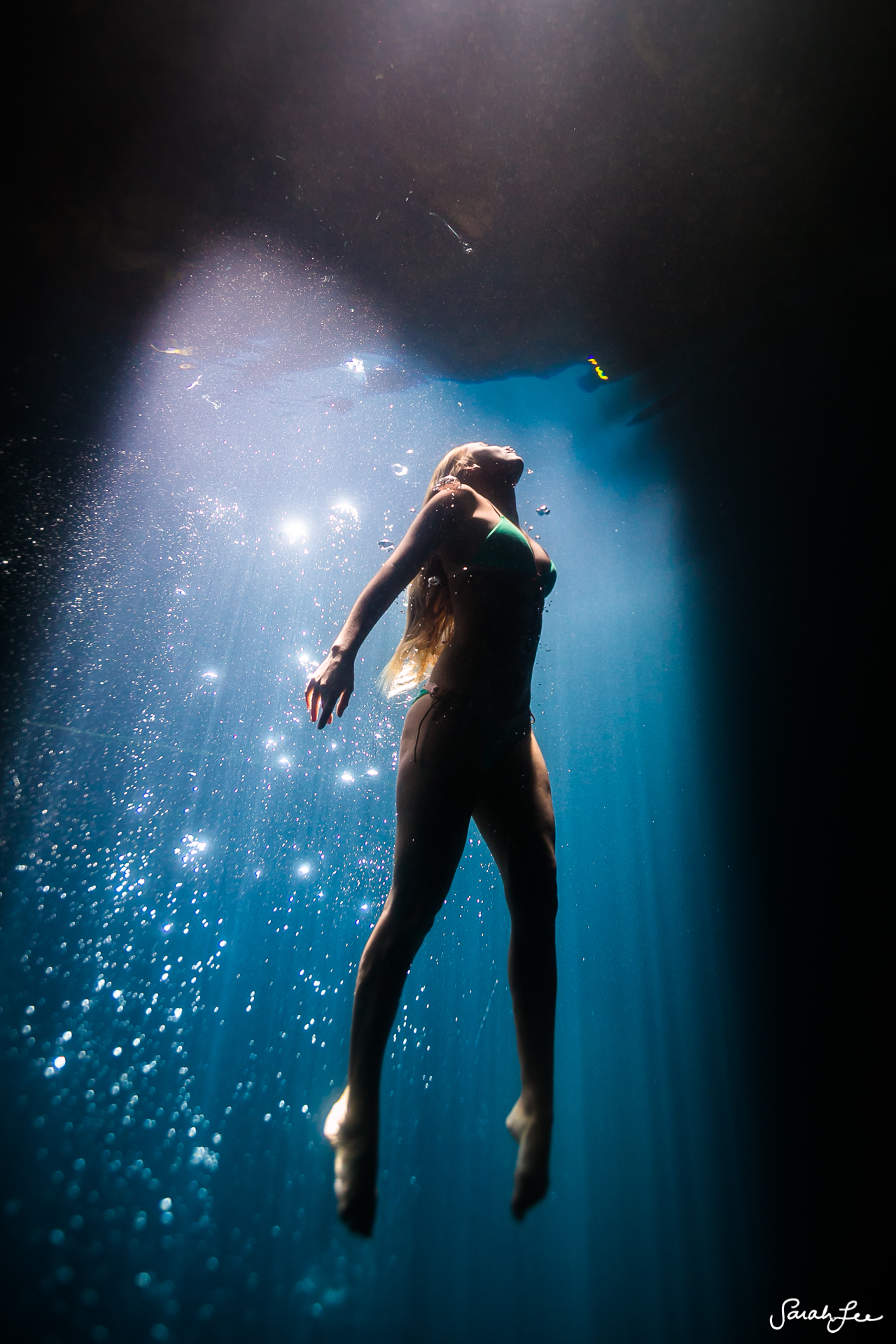
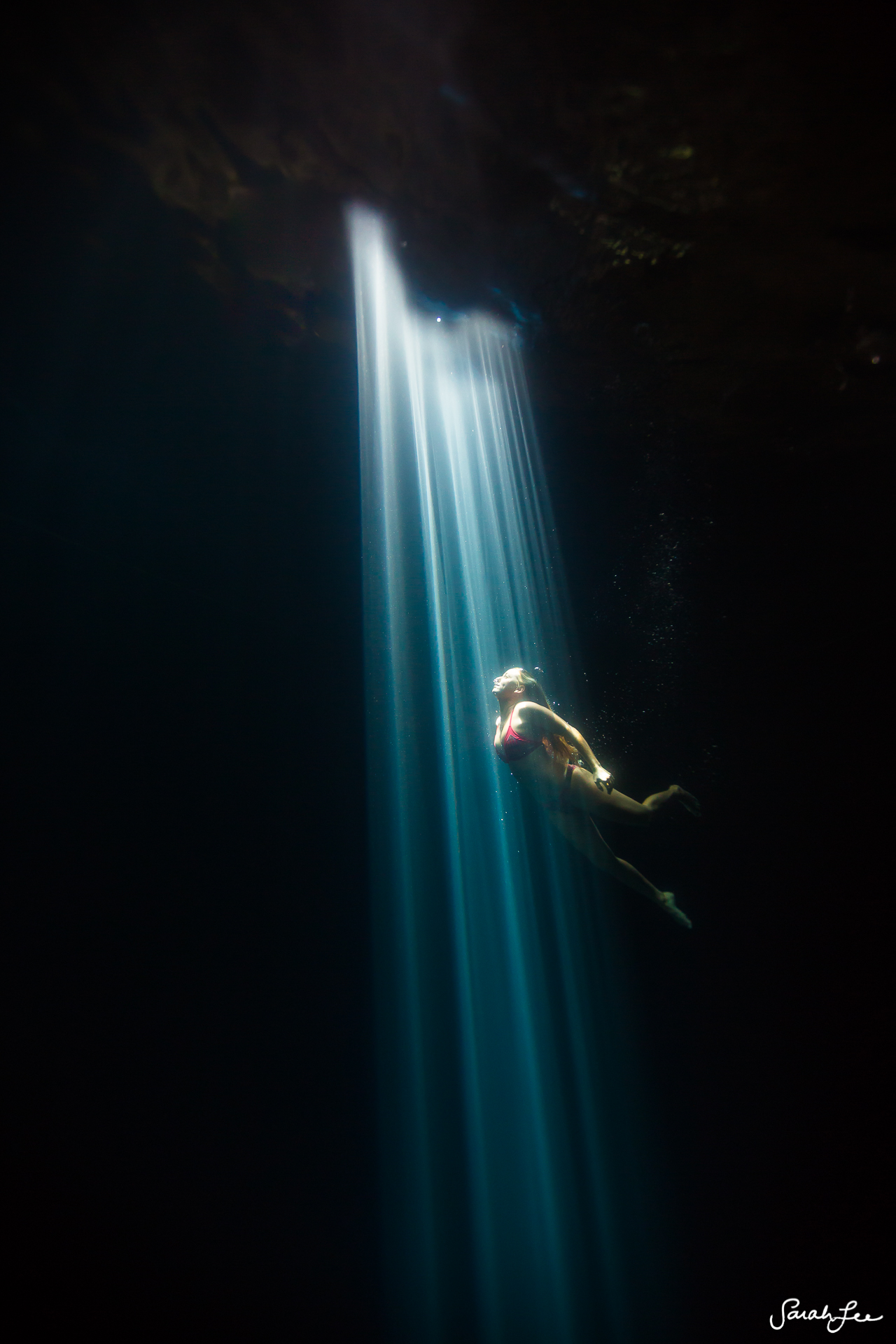
Additional Resources
Feedback/Questions?
I'd love to hear any additional questions you might have or feedback from your experience using the Outex water housings however if you are having any technical issues or ordering questions, PLEASE reach out to Outex customer support instead of emailing me or leaving a comment here. :)
***Disclaimer*** Outex has supported a few of my projects collaborating with Alison’s Adventures (who is featured in some of the photos/video in this blog post) in the past, however I am sharing this unsponsored review, primarily to answer questions and address the concerns I’ve received from many people via email. This review contains affiliate links to Outex and Amazon so if you find this information helpful, please use them.







